 Search by Keyword
|
"ALL YOU NEED IS LOVE"
(John Lennon – Paul McCartney)
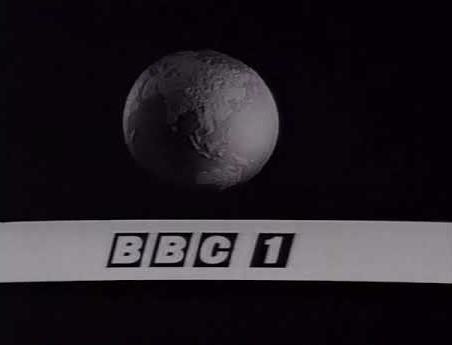 Sometime in early 1967, the BBC began publicizing an upcoming live TV event that would be "for the first time ever, linking five continents and bringing man face to face with mankind, in places as far apart as Canberra and Cape Kennedy, Moscow and Montreal, Samarkand and Soderfors, Takamatsu and Tunis." This ambitious program would be titled "Our World," the world's first ever global TV program, the intention being to link five continents simultaneously by satellites orbiting the earth. Beatles manager Brian Epstein was sent a proposal from the BBC on February 28th, 1967 describing how one section of this television broadcast would "show man's greatest current achievements in the field of art and entertainment. Within this section we would like to offer Britain the subject of The Beatles at work...in a recording studio making a disc. Sometime in early 1967, the BBC began publicizing an upcoming live TV event that would be "for the first time ever, linking five continents and bringing man face to face with mankind, in places as far apart as Canberra and Cape Kennedy, Moscow and Montreal, Samarkand and Soderfors, Takamatsu and Tunis." This ambitious program would be titled "Our World," the world's first ever global TV program, the intention being to link five continents simultaneously by satellites orbiting the earth. Beatles manager Brian Epstein was sent a proposal from the BBC on February 28th, 1967 describing how one section of this television broadcast would "show man's greatest current achievements in the field of art and entertainment. Within this section we would like to offer Britain the subject of The Beatles at work...in a recording studio making a disc.
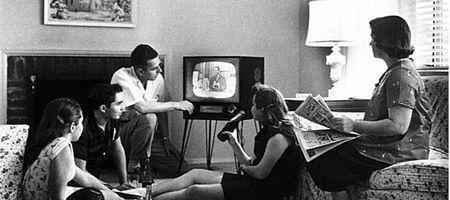 Eighteen countries made agreements to provide live contributions to this show while thirteen more countries agreed to broadcast the event (although seven of these nations pulled out just before it aired). A projected 500 million viewers were anticipated, this being the most ambitious and historic television program of its time. In the US, the show was to be aired on the National Educational Television (NET) network of 113 affiliate stations. Eighteen countries made agreements to provide live contributions to this show while thirteen more countries agreed to broadcast the event (although seven of these nations pulled out just before it aired). A projected 500 million viewers were anticipated, this being the most ambitious and historic television program of its time. In the US, the show was to be aired on the National Educational Television (NET) network of 113 affiliate stations.
All of the contributions to the program were to be divided into a number of sub-sections, namely “This Moment's World,” “The Hungry World,” “The Crowded World,” “Physical Excellence,” “Artistic Excellence” and “The World Beyond.” Since the entire program was the brainchild of the BBC, the British contribution was well thought out with the intention of displaying the finest the country had to offer.
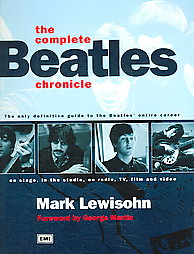 With this in mind, it was hardly a surprise to most that on May 18th, 1967, it was announced that The Beatles would be highlighted as the concluding segment of the “Artistic Excellence” section of this adventurous TV project, being one of two British contributions to the program. The group was to perform live in EMI Studios recording a song they had written especially for this occasion. “In what has since been described, with some justification, as the greatest single moment in the history of popular music,” Mark Lewisohn said in “The Complete Beatles Chronicle,” “The Beatles, now at their absolute zenith, performed 'All You Need Is Love'...From playing skiffle music in an abattoir workers' social club back in 1957 to instructing 350 million people, live across the globe ten years later that 'love is all you need' is a leap in scale so colossal that it's still hard to comprehend.” With this in mind, it was hardly a surprise to most that on May 18th, 1967, it was announced that The Beatles would be highlighted as the concluding segment of the “Artistic Excellence” section of this adventurous TV project, being one of two British contributions to the program. The group was to perform live in EMI Studios recording a song they had written especially for this occasion. “In what has since been described, with some justification, as the greatest single moment in the history of popular music,” Mark Lewisohn said in “The Complete Beatles Chronicle,” “The Beatles, now at their absolute zenith, performed 'All You Need Is Love'...From playing skiffle music in an abattoir workers' social club back in 1957 to instructing 350 million people, live across the globe ten years later that 'love is all you need' is a leap in scale so colossal that it's still hard to comprehend.”
Songwriting History
"Brian (Epstein) suddenly whirled in and said that we were to represent Britain in a round-the-world hook-up, and we'd got to write a song," recalls George Martin. "It was a challenge. We had less than two weeks to get it together, and then we learnt there were going to be over 300 million people watching, which was for those days a phenomenal figure."
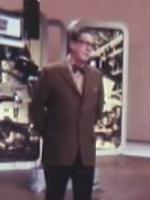 In a mid 1967 interview, Paul explained to DJ Kenny Everett, "What happened was, a fellow from the BBC, an organization which I'm sure you've heard of, asked us to get together a song for this. So we said, 'We'd get one together, with nice easy words, so that everyone can understand it.' So he said, 'Oh, all right then. We'll see you in a couple weeks.' So we went away, and we just played Monopoly for a while, and then the fellow said, 'Now, where's the song?' So we said, 'Ah! Don't worry Derek.' His name is Derek Burrell-Davis. 'We'll soon have a song for you.'" After this meeting between Derek Burrell-Davis and The Beatles on May 17th, 1967, he sent a telegram to the coordinator of the BBC project, Aubrey Singer, informing her that their "Our World beat group" were "responsive to world stage - writing new number with words such as Hello Love You Me Us Them We Together. Intend indicate swinging London. Happening hoped for. Promise participate all rehearsals." In a mid 1967 interview, Paul explained to DJ Kenny Everett, "What happened was, a fellow from the BBC, an organization which I'm sure you've heard of, asked us to get together a song for this. So we said, 'We'd get one together, with nice easy words, so that everyone can understand it.' So he said, 'Oh, all right then. We'll see you in a couple weeks.' So we went away, and we just played Monopoly for a while, and then the fellow said, 'Now, where's the song?' So we said, 'Ah! Don't worry Derek.' His name is Derek Burrell-Davis. 'We'll soon have a song for you.'" After this meeting between Derek Burrell-Davis and The Beatles on May 17th, 1967, he sent a telegram to the coordinator of the BBC project, Aubrey Singer, informing her that their "Our World beat group" were "responsive to world stage - writing new number with words such as Hello Love You Me Us Them We Together. Intend indicate swinging London. Happening hoped for. Promise participate all rehearsals."
 Geoff Emerick, in his 2006 book entitled “Here, There And Everywhere,” related some first-hand details about the group being introduced to the project. “A couple of months previously, while we were still wrapped up with the job of completing 'Pepper,' Brian Epstein had made one of his very infrequent visits to the studio. With a grandiloquent sweep of this hands, he called for silence. 'Boys,' he announced, 'I have the most fantastic news to report.' Everyone's ears perked up. Brian paused for dramatic emphasis. 'You have been selected to represent England in a television program which, for the first time ever, will be transmitted live around the world via satellite. The BBC shall actually be filming you making your next record.'” Geoff Emerick, in his 2006 book entitled “Here, There And Everywhere,” related some first-hand details about the group being introduced to the project. “A couple of months previously, while we were still wrapped up with the job of completing 'Pepper,' Brian Epstein had made one of his very infrequent visits to the studio. With a grandiloquent sweep of this hands, he called for silence. 'Boys,' he announced, 'I have the most fantastic news to report.' Everyone's ears perked up. Brian paused for dramatic emphasis. 'You have been selected to represent England in a television program which, for the first time ever, will be transmitted live around the world via satellite. The BBC shall actually be filming you making your next record.'”
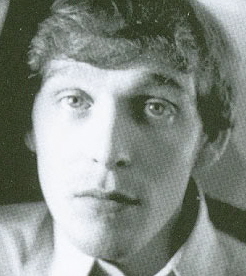 “He looked around the room expectantly,” added Geoff Emerick. “I almost thought he was getting ready to take a bow. To his utter dismay, the group's response was...to yawn. Ringo fidgeted at the back of the room, anxious to return to the game of chess he was playing with Neil (Aspinall), and George resumed tuning his guitar. John and Paul exchanged blank looks for a moment. Paul didn't seem all that interested; I guess he was probably just too focused on finishing up 'Pepper.' With a distinct lack of enthusiasm, John finally said, 'Oh, okay. I'll do something for that.'” “He looked around the room expectantly,” added Geoff Emerick. “I almost thought he was getting ready to take a bow. To his utter dismay, the group's response was...to yawn. Ringo fidgeted at the back of the room, anxious to return to the game of chess he was playing with Neil (Aspinall), and George resumed tuning his guitar. John and Paul exchanged blank looks for a moment. Paul didn't seem all that interested; I guess he was probably just too focused on finishing up 'Pepper.' With a distinct lack of enthusiasm, John finally said, 'Oh, okay. I'll do something for that.'”
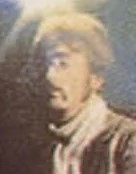 “Brian (Epstein) was incensed at their casual reaction. 'Aren't you excited? Don't you realize what this means to us? Don't you have any idea how much hard work and effort I put into making this deal?' Lennon cut him off with an acidic comment: 'Well, Brian, that's what you get for committing us to doing something without asking us first.' (Brian) Epstein looked close to tears. At a loss for words, he stomped out of the studio in a snit. From the studio chatter that followed after he had gone. I gathered that, rather than viewing this as a coup, the four Beatles saw it as a violation of their self-declared intent to never perform live again. What's more, they resented the fact that their manager had presented it to them as a fait accompli. They were at a point where they wanted to take control of their own career.” “Brian (Epstein) was incensed at their casual reaction. 'Aren't you excited? Don't you realize what this means to us? Don't you have any idea how much hard work and effort I put into making this deal?' Lennon cut him off with an acidic comment: 'Well, Brian, that's what you get for committing us to doing something without asking us first.' (Brian) Epstein looked close to tears. At a loss for words, he stomped out of the studio in a snit. From the studio chatter that followed after he had gone. I gathered that, rather than viewing this as a coup, the four Beatles saw it as a violation of their self-declared intent to never perform live again. What's more, they resented the fact that their manager had presented it to them as a fait accompli. They were at a point where they wanted to take control of their own career.”
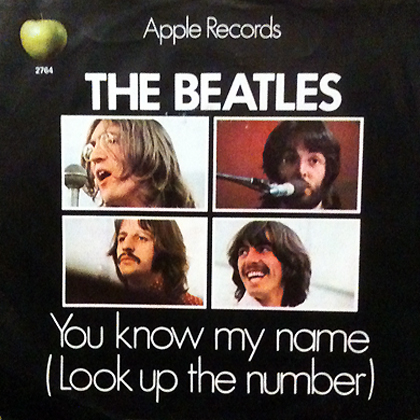 “With that, the issue was forgotten...until, some weeks later, during one of the 'You Know My Name' sessions, Paul happened to ask John casually, 'How are you getting on with that song for the television broadcast? Isn't it coming up fairly soon?' John looked questioningly at Neil, who was the keeper of the band's diary. 'Couple of weeks time, looks like,' Neil (Aspinall) responded after consulting his tattered book.'Oh God, is it that close? Well, then I suppose I'd better write something.'” With the above information, we can narrow down the time of writing “All You Need Is Love” as between June 7th and 14th, 1967. “With that, the issue was forgotten...until, some weeks later, during one of the 'You Know My Name' sessions, Paul happened to ask John casually, 'How are you getting on with that song for the television broadcast? Isn't it coming up fairly soon?' John looked questioningly at Neil, who was the keeper of the band's diary. 'Couple of weeks time, looks like,' Neil (Aspinall) responded after consulting his tattered book.'Oh God, is it that close? Well, then I suppose I'd better write something.'” With the above information, we can narrow down the time of writing “All You Need Is Love” as between June 7th and 14th, 1967.
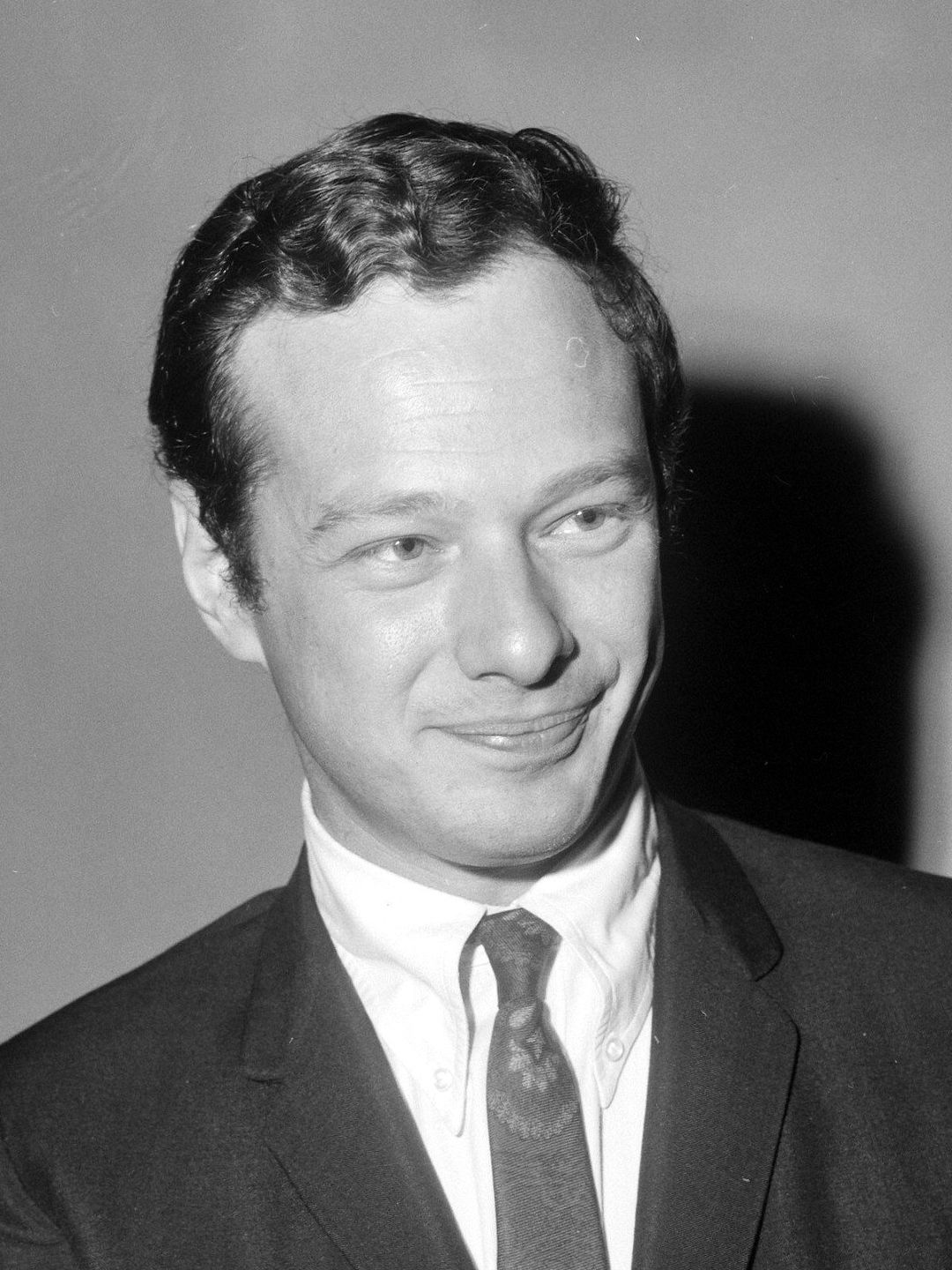 Shortly before his death, Brian Epstein had this to say about the “All You Need Is Love” project: “I've never had a moment's worry that they wouldn't come up with something marvelous. The commitment for the TV program was arranged some months ago. The time got nearer and nearer, and they still hadn't written anything. Then, about three weeks before the program, they sat down to write. The record was completed in ten days. This is an inspired song, because they wrote it for a worldwide program and they really wanted to give the world a message. It could hardly have been a better message. It is a wonderful, beautiful, spine-chilling record.” Shortly before his death, Brian Epstein had this to say about the “All You Need Is Love” project: “I've never had a moment's worry that they wouldn't come up with something marvelous. The commitment for the TV program was arranged some months ago. The time got nearer and nearer, and they still hadn't written anything. Then, about three weeks before the program, they sat down to write. The record was completed in ten days. This is an inspired song, because they wrote it for a worldwide program and they really wanted to give the world a message. It could hardly have been a better message. It is a wonderful, beautiful, spine-chilling record.”
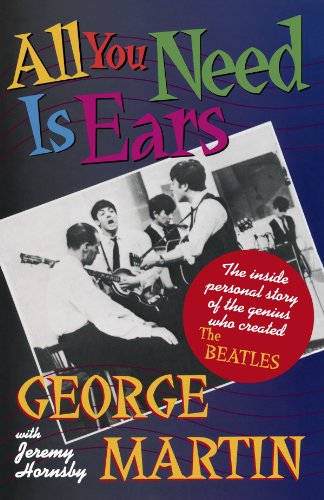 “Even The Beatles, who were seldom overawed by anything, were a bit bomb-happy about it,” George Martin relates in his book “All You Need Is Ears.” “'But you can't just go off the cuff,' I pleaded with them. 'We've got to prepare something.' So they went away to get something together, and John came up with 'All You Need Is Love.' It had to be kept terribly secret, because the general idea was that the television viewers would actually see The Beatles at work recording their new single...John came up with the idea of the song, which was ideal, lovely...They work best under pressure. It is a fairly simple love song.” “Even The Beatles, who were seldom overawed by anything, were a bit bomb-happy about it,” George Martin relates in his book “All You Need Is Ears.” “'But you can't just go off the cuff,' I pleaded with them. 'We've got to prepare something.' So they went away to get something together, and John came up with 'All You Need Is Love.' It had to be kept terribly secret, because the general idea was that the television viewers would actually see The Beatles at work recording their new single...John came up with the idea of the song, which was ideal, lovely...They work best under pressure. It is a fairly simple love song.”
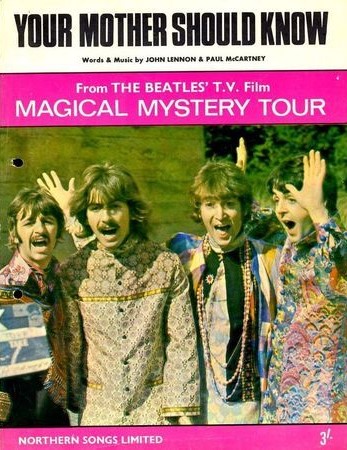 “So John and I just got together,” Paul continues, “and thought and I wrote one, and John wrote one, and we went to the session and we just decided to do his first. By the time that we had done the backing track for John's, we suddenly realized that his was the one...So we've still got mine, ready to do for the next one, which is of a similar nature in its simplicity, but with a different message.” Although Paul's intended contribution has never been confirmed, many feel it was the very next song The Beatles recorded, namely, “Your Mother Should Know.” “So John and I just got together,” Paul continues, “and thought and I wrote one, and John wrote one, and we went to the session and we just decided to do his first. By the time that we had done the backing track for John's, we suddenly realized that his was the one...So we've still got mine, ready to do for the next one, which is of a similar nature in its simplicity, but with a different message.” Although Paul's intended contribution has never been confirmed, many feel it was the very next song The Beatles recorded, namely, “Your Mother Should Know.”
 In his book “Many Years From Now,” Paul elaborates: “'All You Need I Love' was John's song. I threw in a few ideas, as did the other members of the group, but it was largely ad libs like singing 'She Loves You'...or silly little things at the end and we made those up on the spot. The chorus 'All you need is love' is simple, but the verse is quite complex, in fact I never really understood it, the message is rather complex.” In his book “Many Years From Now,” Paul elaborates: “'All You Need I Love' was John's song. I threw in a few ideas, as did the other members of the group, but it was largely ad libs like singing 'She Loves You'...or silly little things at the end and we made those up on the spot. The chorus 'All you need is love' is simple, but the verse is quite complex, in fact I never really understood it, the message is rather complex.”
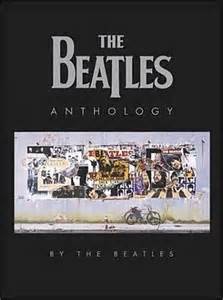 George Harrison seemed to understand the lyrics, however, as he explained in the “Beatles Anthology” book about his overall experience in The Beatles: “If we weren't in The Beatles we would have been in something else, not necessarily another rock'n'roll band. Karma is: what you sow, you reap. Like John said in 'All You Need Is Love': 'There's nowhere you can be that isn't where you're meant to be,' because you yourself have carved out your own destiny by your previous actions. I always had a feeling that something was going to happen.” George Harrison seemed to understand the lyrics, however, as he explained in the “Beatles Anthology” book about his overall experience in The Beatles: “If we weren't in The Beatles we would have been in something else, not necessarily another rock'n'roll band. Karma is: what you sow, you reap. Like John said in 'All You Need Is Love': 'There's nowhere you can be that isn't where you're meant to be,' because you yourself have carved out your own destiny by your previous actions. I always had a feeling that something was going to happen.”
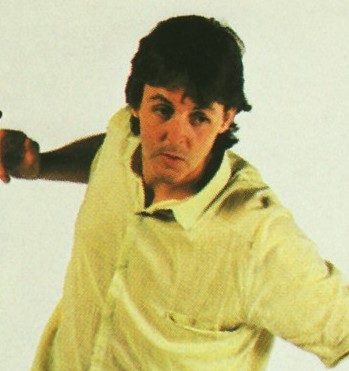 In time, Paul's memory began to fade as to whether the song was written especially for the occasion or not. “One of those we had around at the time,” Paul stated. “I've got a feeling it was just one of John's songs that was coming anyway...once we had it, it was certainly tailored to suit the program.” It appears, however, that these blurry recollections are just the products of the passage of time since his earlier quotes, as those from many others, indicates the song being written specifically for the “Our World” program. In time, Paul's memory began to fade as to whether the song was written especially for the occasion or not. “One of those we had around at the time,” Paul stated. “I've got a feeling it was just one of John's songs that was coming anyway...once we had it, it was certainly tailored to suit the program.” It appears, however, that these blurry recollections are just the products of the passage of time since his earlier quotes, as those from many others, indicates the song being written specifically for the “Our World” program.
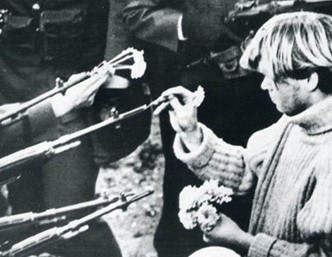 In any event, Ringo stated it well in their book “Beatles Anthology”: “The writers of the song were masters at hitting the nail on the head!..It was for love. It was for love and bloody peace. It was a fabulous time. I even get excited now when I realize that's what it was for: Peace and love, people putting flowers in guns.” In any event, Ringo stated it well in their book “Beatles Anthology”: “The writers of the song were masters at hitting the nail on the head!..It was for love. It was for love and bloody peace. It was a fabulous time. I even get excited now when I realize that's what it was for: Peace and love, people putting flowers in guns.”
Recording History
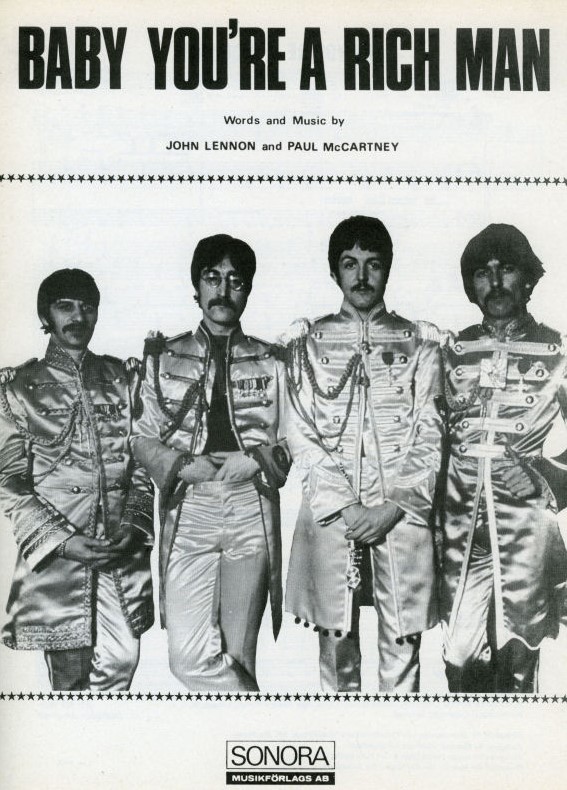 "The project came together so fast," stated Geoff Emerick about preparing for the "All You Need Is Love" broadcast, "that George Martin was unable to book the band into any of the EMI studios, so they had to record their backing track at Olympic (Studios); once again, to my frustration. I was unable to engineer it or even attend because I was an EMI staffer." The group's recent positive experience at Olympic Studios recording "Baby You're A Rich Man" made the choice of this studio an easy one. "The project came together so fast," stated Geoff Emerick about preparing for the "All You Need Is Love" broadcast, "that George Martin was unable to book the band into any of the EMI studios, so they had to record their backing track at Olympic (Studios); once again, to my frustration. I was unable to engineer it or even attend because I was an EMI staffer." The group's recent positive experience at Olympic Studios recording "Baby You're A Rich Man" made the choice of this studio an easy one.
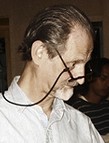 With only eleven days until the TV show was due for broadcast, The Beatles entered Olympic Sound Studios on June 14th, 1967 (time unknown) to record their rhythm track for “All You Need Is Love.” In Geoff Emerick's absence, Eddie Kramer (future producer of Jimi Hendrix and Kiss) was the engineer along with George Chkiantz as the tape operator and, as usual, George Martin as their producer. Eddie Kramer remembers: “They came in and it was, 'Well, what are we going to do now?' John had the idea for 'All You Need Is Love' and he sat next to me in the control room. We rigged the talkback mike so that it could be used for vocals, and he sang through that.” With only eleven days until the TV show was due for broadcast, The Beatles entered Olympic Sound Studios on June 14th, 1967 (time unknown) to record their rhythm track for “All You Need Is Love.” In Geoff Emerick's absence, Eddie Kramer (future producer of Jimi Hendrix and Kiss) was the engineer along with George Chkiantz as the tape operator and, as usual, George Martin as their producer. Eddie Kramer remembers: “They came in and it was, 'Well, what are we going to do now?' John had the idea for 'All You Need Is Love' and he sat next to me in the control room. We rigged the talkback mike so that it could be used for vocals, and he sang through that.”
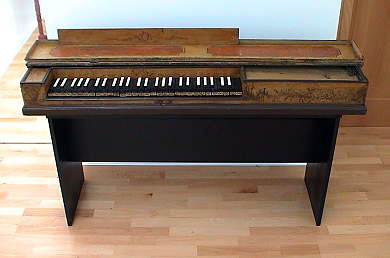 But this was hardly their typical recording session, as John himself explained back in 1967: “We just put a track down, because I knew the chords. I played the harpsichord and George played a violin, because we felt like doing it like that. Paul played a double bass. They can't play them, so we got some nice noises coming out and you can hear it going on 'cause it sounded like an orchestra, but it's just those two playing the violin.” Eddie Kramer recalled: “There was a bunch of instruments left over in the studio from previous sessions, including a double-bass that Paul played.” An invoice from that session revealed a fee of ten guineas being paid for John's use of the harpsichord. George Martin stated: “I remember that one of the minor problems was that George had got hold of a violin which he wanted to try to play, even though he couldn't!” But this was hardly their typical recording session, as John himself explained back in 1967: “We just put a track down, because I knew the chords. I played the harpsichord and George played a violin, because we felt like doing it like that. Paul played a double bass. They can't play them, so we got some nice noises coming out and you can hear it going on 'cause it sounded like an orchestra, but it's just those two playing the violin.” Eddie Kramer recalled: “There was a bunch of instruments left over in the studio from previous sessions, including a double-bass that Paul played.” An invoice from that session revealed a fee of ten guineas being paid for John's use of the harpsichord. George Martin stated: “I remember that one of the minor problems was that George had got hold of a violin which he wanted to try to play, even though he couldn't!”
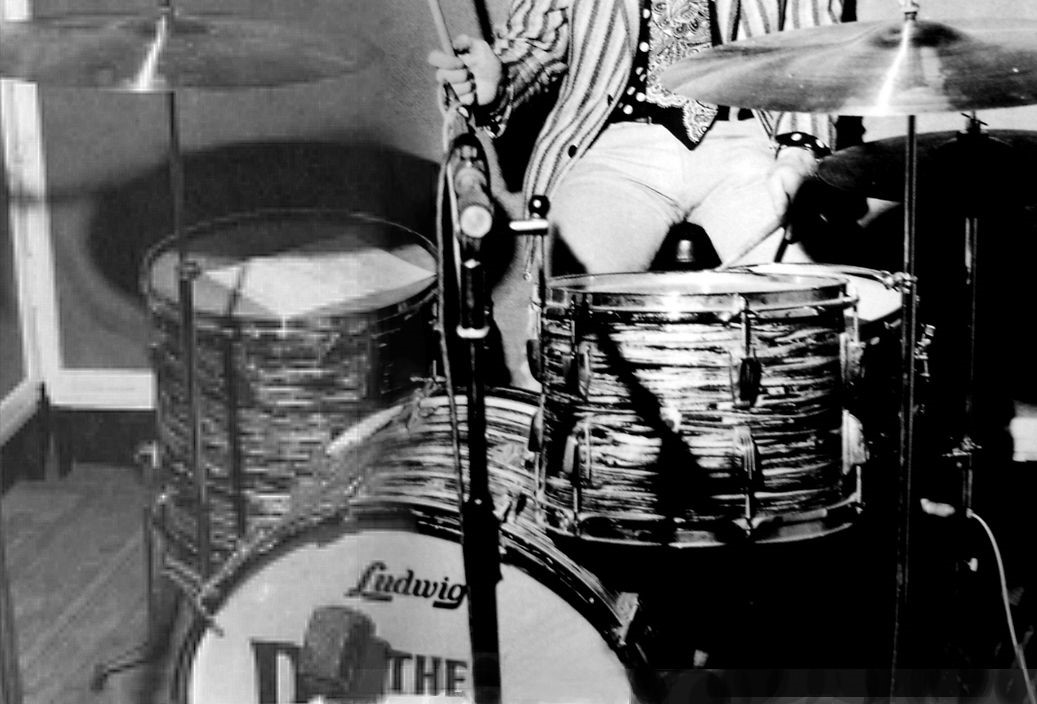 With Ringo on his usual drum kit, the group went through a total of 33 takes of the rhythm track with this unusual instrumentation, John's vocal being the only voice heard intended as a guide vocal only. The 1988 book “The Beatles Recording Sessions” explained, “Right from the beginning of 'take one,' (French National Anthem) 'La Marseillaise' was a vital part of the song, emphasizing the international flavor of the occasion.” This session's engineer, George Chkiantz, related: “The Beatles were very opportunistic and very positive. At one point we accidentally made a curious sound on the tape and they not only wanted to keep it on the recording but they also asked us to deliberately repeat that same sound again. Other acts would have been annoyed but The Beatles capitalized on the mistake.” With Ringo on his usual drum kit, the group went through a total of 33 takes of the rhythm track with this unusual instrumentation, John's vocal being the only voice heard intended as a guide vocal only. The 1988 book “The Beatles Recording Sessions” explained, “Right from the beginning of 'take one,' (French National Anthem) 'La Marseillaise' was a vital part of the song, emphasizing the international flavor of the occasion.” This session's engineer, George Chkiantz, related: “The Beatles were very opportunistic and very positive. At one point we accidentally made a curious sound on the tape and they not only wanted to keep it on the recording but they also asked us to deliberately repeat that same sound again. Other acts would have been annoyed but The Beatles capitalized on the mistake.”
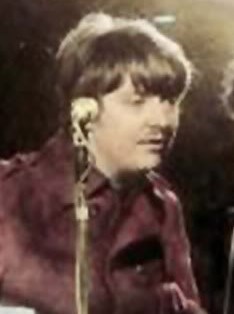 Eddie Kramer added: “They did the song from beginning to end for a good half-hour. They'd get to the end of the song and John would count it off again without stopping, doing it again and again until they got the one that they liked.” It was determined that "take 10" was the best, so a tape reduction was prepared of this take to be brought to EMI Studios for more recording. “They did a four-track to four-track mixdown,” George Chkiantz continued, with curiously little care we all thought – and George Martin specifically told me to keep any little chatter before the take began." The band obviously wanted to preserve the events of this momentous occasion. Eddie Kramer added: “They did the song from beginning to end for a good half-hour. They'd get to the end of the song and John would count it off again without stopping, doing it again and again until they got the one that they liked.” It was determined that "take 10" was the best, so a tape reduction was prepared of this take to be brought to EMI Studios for more recording. “They did a four-track to four-track mixdown,” George Chkiantz continued, with curiously little care we all thought – and George Martin specifically told me to keep any little chatter before the take began." The band obviously wanted to preserve the events of this momentous occasion.
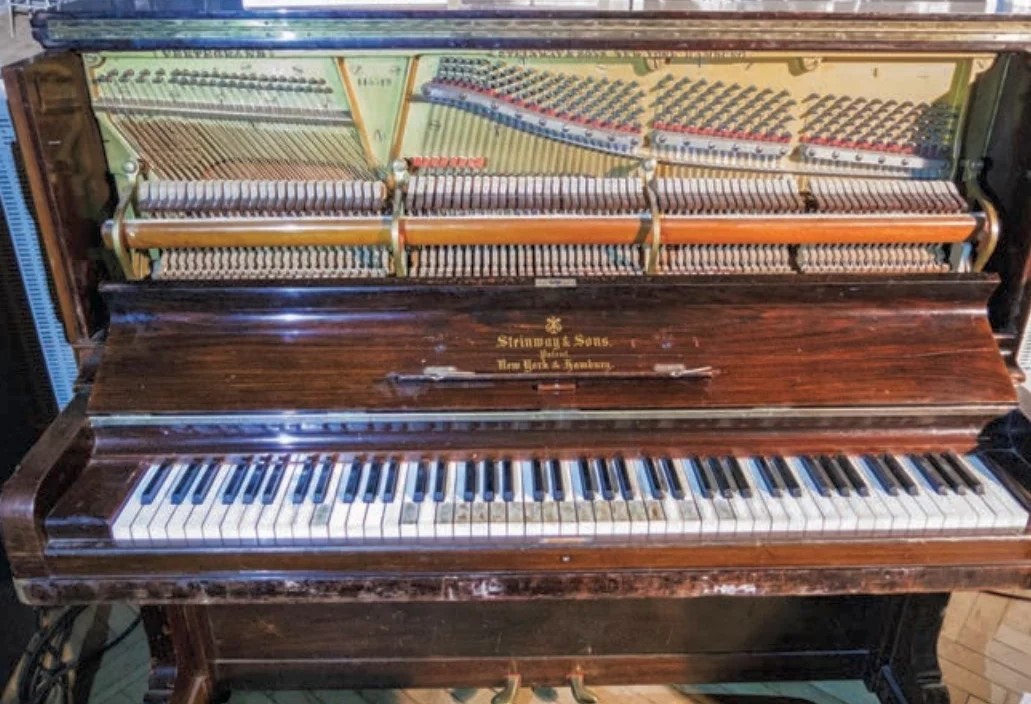 Five days later (only six days to go), on June 19th, 1967, they continued work on this song in EMI Studio Three from 7 pm to 1:45 am the following day. After the engineering staff of George Martin, Geoff Emerick and 2nd engineer Richard Lush prepared a tape copy of the previously recorded rhythm track onto track one of a new four-track tape, overdubbing began on the three open tracks. Onto track two was recorded more drums from Ringo, a piano played by George Martin, and a banjo played by John. Onto tracks three and four were recorded John on lead vocals and Paul and George on backing vocals. These lead vocals from John were apparently replaced later, as we'll see. Five days later (only six days to go), on June 19th, 1967, they continued work on this song in EMI Studio Three from 7 pm to 1:45 am the following day. After the engineering staff of George Martin, Geoff Emerick and 2nd engineer Richard Lush prepared a tape copy of the previously recorded rhythm track onto track one of a new four-track tape, overdubbing began on the three open tracks. Onto track two was recorded more drums from Ringo, a piano played by George Martin, and a banjo played by John. Onto tracks three and four were recorded John on lead vocals and Paul and George on backing vocals. These lead vocals from John were apparently replaced later, as we'll see.
 The first mono mix created for the song was done on June 21st, 1967 in Room 53 of EMI Studios between 4:30 and 5 pm by George Martin and engineers Malcolm Addey and Phil McDonald. This mono mix, however, was only of the rhythm track recorded at Olympic Studios (omitting the above mentioned overdubs done on June 19th, 1967) and was documented as “remix 1.” Later that evening, in the control room of EMI Studio Three, a similar mono mix, this one unnumbered, was prepared by the team of George Martin, Geoff Emerick and Richard Lush between the hours of 7 and 11:30 pm. An acetate of this mono mix was given to Derek Burrell Davis, director of the BBC broadcast team, in preparation for the upcoming June 25th, 1967 show. The first mono mix created for the song was done on June 21st, 1967 in Room 53 of EMI Studios between 4:30 and 5 pm by George Martin and engineers Malcolm Addey and Phil McDonald. This mono mix, however, was only of the rhythm track recorded at Olympic Studios (omitting the above mentioned overdubs done on June 19th, 1967) and was documented as “remix 1.” Later that evening, in the control room of EMI Studio Three, a similar mono mix, this one unnumbered, was prepared by the team of George Martin, Geoff Emerick and Richard Lush between the hours of 7 and 11:30 pm. An acetate of this mono mix was given to Derek Burrell Davis, director of the BBC broadcast team, in preparation for the upcoming June 25th, 1967 show.
 “So then we thought, 'Ah well, we'll have some more orchestra around this little three-piece with a drum,'” explained John in 1967. George Martin related in his book “All You Need Is Ears,” “I created a score for the song, a fairly arbitrary sort of arrangement since it was at such short notice.” The orchestra was planned to be a part of the live television event, but they recorded a sizable portion of their contribution beforehand, on June 23rd, 1967 in EMI Studio One between 8 and 11 pm. “So then we thought, 'Ah well, we'll have some more orchestra around this little three-piece with a drum,'” explained John in 1967. George Martin related in his book “All You Need Is Ears,” “I created a score for the song, a fairly arbitrary sort of arrangement since it was at such short notice.” The orchestra was planned to be a part of the live television event, but they recorded a sizable portion of their contribution beforehand, on June 23rd, 1967 in EMI Studio One between 8 and 11 pm.
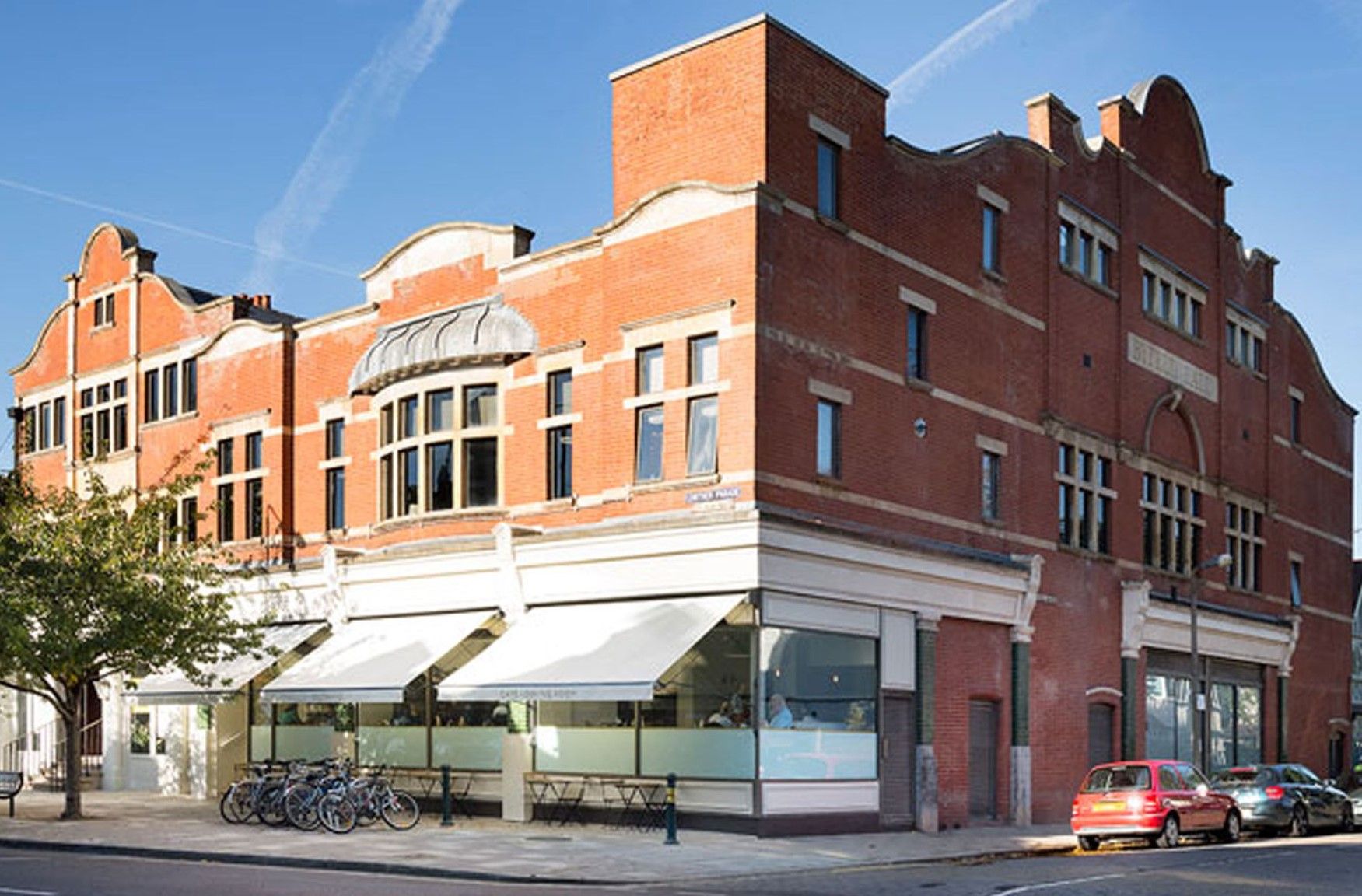 Since each of four tracks of the four-track tape were full at this point, a tape reduction was first made on this day to open up additional tracks for overdubbing purposes. The orchestra overdubbed George Martin's score onto this tape reduction (still stipulated as "take 10"), these new overdubs being designated as takes 34 through 43 (thus continuing from the 33 initial takes The Beatles made at Olympic Studios on June 14th, 1967). Since each of four tracks of the four-track tape were full at this point, a tape reduction was first made on this day to open up additional tracks for overdubbing purposes. The orchestra overdubbed George Martin's score onto this tape reduction (still stipulated as "take 10"), these new overdubs being designated as takes 34 through 43 (thus continuing from the 33 initial takes The Beatles made at Olympic Studios on June 14th, 1967).
 Around this time, some very brave decisions were made regarding the actual live broadcast. “In a fit of bravado,” relates Geoff Emerick, “Lennon announced that he was going to do his lead vocal live during the broadcast, which prompted the ever competitive Paul to respond that if John was going to do that, he would play bass live, too. It seemed to me to be a foolhardy – though brave – decision. What if one of them sang or played a bad note in front of millions of viewers? But they were supremely confident, and they could not be dissuaded by George Martin, who was adamantly opposed, but as was usual by this point, had no real authority.” Around this time, some very brave decisions were made regarding the actual live broadcast. “In a fit of bravado,” relates Geoff Emerick, “Lennon announced that he was going to do his lead vocal live during the broadcast, which prompted the ever competitive Paul to respond that if John was going to do that, he would play bass live, too. It seemed to me to be a foolhardy – though brave – decision. What if one of them sang or played a bad note in front of millions of viewers? But they were supremely confident, and they could not be dissuaded by George Martin, who was adamantly opposed, but as was usual by this point, had no real authority.”
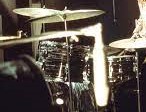 “In an act of further defiance,” wrote Geoff Emerick, “John and Paul even talked George Harrison into doing his guitar solo live, which we all knew was a tricky proposition. To my surprise, Harrison gave in without a whole lot of argument; my sense was that he was afraid of being embarrassed in front of his bandmates. Only Ringo was completely safe, for technical reasons: if the drums were played live, there would be too much leakage onto the microphones that were going to be picking up the sound of the orchestra. Ringo nodded his head solemnly when I explained that to him. I couldn't tell whether he was relieved at being absolved of the responsibility of playing live, or whether he felt left out.” “In an act of further defiance,” wrote Geoff Emerick, “John and Paul even talked George Harrison into doing his guitar solo live, which we all knew was a tricky proposition. To my surprise, Harrison gave in without a whole lot of argument; my sense was that he was afraid of being embarrassed in front of his bandmates. Only Ringo was completely safe, for technical reasons: if the drums were played live, there would be too much leakage onto the microphones that were going to be picking up the sound of the orchestra. Ringo nodded his head solemnly when I explained that to him. I couldn't tell whether he was relieved at being absolved of the responsibility of playing live, or whether he felt left out.”
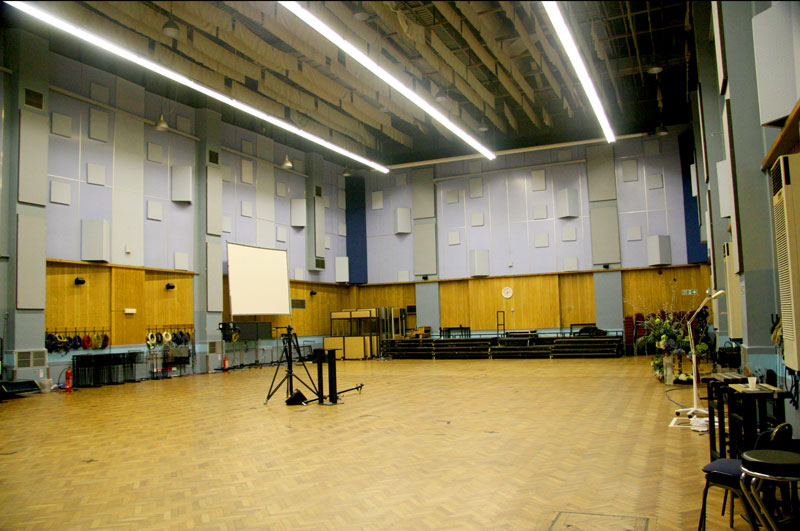 The following day, June 24th, 1967 (the day before The Big Event), EMI Studios decided to forego their usual "closed door" policy and allow over 100 journalists and photographers inside throughout the late morning. Then, from 2 to 4 pm, a BBC camera rehearsal for the next day's events took place in EMI Studio One, this including The Beatles, all of the 13 members of the orchestra and Mike Vickers, a previous member of The Manfred Mann Band who had been recruited to conduct the orchestra (George Martin being be too busy in the control room on that day). The following day, June 24th, 1967 (the day before The Big Event), EMI Studios decided to forego their usual "closed door" policy and allow over 100 journalists and photographers inside throughout the late morning. Then, from 2 to 4 pm, a BBC camera rehearsal for the next day's events took place in EMI Studio One, this including The Beatles, all of the 13 members of the orchestra and Mike Vickers, a previous member of The Manfred Mann Band who had been recruited to conduct the orchestra (George Martin being be too busy in the control room on that day).
One of these rehearsals was officially released in 2025 on the album "Anthology 4," which captured the following interchange in-between rehearsal attempts.
Paul: George (Martin), when you give us that, will you give us the other voices that we've already done?
George Martin: You'll be getting them. I think that's fine with that take now. We'll have the musicians in, mate.
Paul: Alright.
John and Paul: Screaming!
Paul: George, we had the musicians in just before but we sent them out!
Television announcer Steve Race then verbally documents the processes of this event, this recording being transmitted just prior to the live transmission the following day.
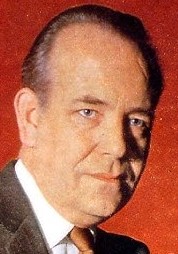 "There was several days work in that take. For perhaps the hundreth time, the engineer runs it back to the start for yet another take in the making of an almost certain hit record. The supervisor is George Martin, the musical brains behind all the Beatles records. Here's the orchestra coming into the studio now. And you'll notice that the musicians are not rock 'n' roll youngsters. The Beatles get on best with symphony men. The boys began by making a basic instrumental track on their own. Then they added on top of that a second track of vocal backgrounds. They just added a third track which doubles up on the previous vocal. Now comes the final track. It brings in a solo vocal from John Lennon and for the first time, the orchestra. Here, then, is final mixed track, take one, of a song in which we offer to the whole world - 'All You Need Is Love.'" "There was several days work in that take. For perhaps the hundreth time, the engineer runs it back to the start for yet another take in the making of an almost certain hit record. The supervisor is George Martin, the musical brains behind all the Beatles records. Here's the orchestra coming into the studio now. And you'll notice that the musicians are not rock 'n' roll youngsters. The Beatles get on best with symphony men. The boys began by making a basic instrumental track on their own. Then they added on top of that a second track of vocal backgrounds. They just added a third track which doubles up on the previous vocal. Now comes the final track. It brings in a solo vocal from John Lennon and for the first time, the orchestra. Here, then, is final mixed track, take one, of a song in which we offer to the whole world - 'All You Need Is Love.'"
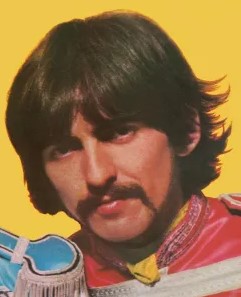 Of course, by the time this announcement aired during the live footage the following day, it was not the "first time" the orchestra rehearsed George Martin's orchestral score. Also, this wasn't just a "solo vocal from John Lennon," but was also including Paul's vocal, George's guitar and Ringo's snare drum. Of course, by the time this announcement aired during the live footage the following day, it was not the "first time" the orchestra rehearsed George Martin's orchestral score. Also, this wasn't just a "solo vocal from John Lennon," but was also including Paul's vocal, George's guitar and Ringo's snare drum.
 After the orchestra is set up and John states, "Somebody's got to own up," the orchestra rehearses the song's introduction of the French National Anthem "Marseillaise." This no doubt is the first time The Beatles have heard this intro, prompting John to humorously exclaim: ""Gesundheit..." and continue a phrase is mock German. After muffled instructions from the control room, John acts as a BBC announcer at a royal event, stating: "Queen Margaret was wearing a low-feathered nightgown." After George Martin stated: "Let me know when you want to go. Do you wanna go right now? Stand by," this full orchestral rehearsal begins featuring John and Paul semi-seriously going through the motions, Harrison meandering on guitar throughout the final section of the song, and Lennon exclaiming "C'est la Vie" at the end, no doubt in response to the French National Anthem heard at the beginning of the song. After the orchestra is set up and John states, "Somebody's got to own up," the orchestra rehearses the song's introduction of the French National Anthem "Marseillaise." This no doubt is the first time The Beatles have heard this intro, prompting John to humorously exclaim: ""Gesundheit..." and continue a phrase is mock German. After muffled instructions from the control room, John acts as a BBC announcer at a royal event, stating: "Queen Margaret was wearing a low-feathered nightgown." After George Martin stated: "Let me know when you want to go. Do you wanna go right now? Stand by," this full orchestral rehearsal begins featuring John and Paul semi-seriously going through the motions, Harrison meandering on guitar throughout the final section of the song, and Lennon exclaiming "C'est la Vie" at the end, no doubt in response to the French National Anthem heard at the beginning of the song.
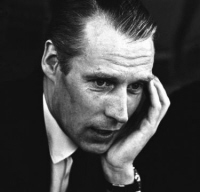 It was during this preliminary rehearsal that Brian Epstein “came in and held a meeting with George Martin and the band,” Geoff Emerick remembers concerning “the wisdom of them rush-releasing the upcoming performance as a single. John, of course, was keen – it was his song, after all – and it didn't take much effort to talk Paul into it, either. George Harrison was reluctant; presumably he was worried that he might muff his solo, even though it was only four bars long. He was finally persuaded when George Martin assured him that we could stay late afterward and do any necessary repair work.” It was during this preliminary rehearsal that Brian Epstein “came in and held a meeting with George Martin and the band,” Geoff Emerick remembers concerning “the wisdom of them rush-releasing the upcoming performance as a single. John, of course, was keen – it was his song, after all – and it didn't take much effort to talk Paul into it, either. George Harrison was reluctant; presumably he was worried that he might muff his solo, even though it was only four bars long. He was finally persuaded when George Martin assured him that we could stay late afterward and do any necessary repair work.”
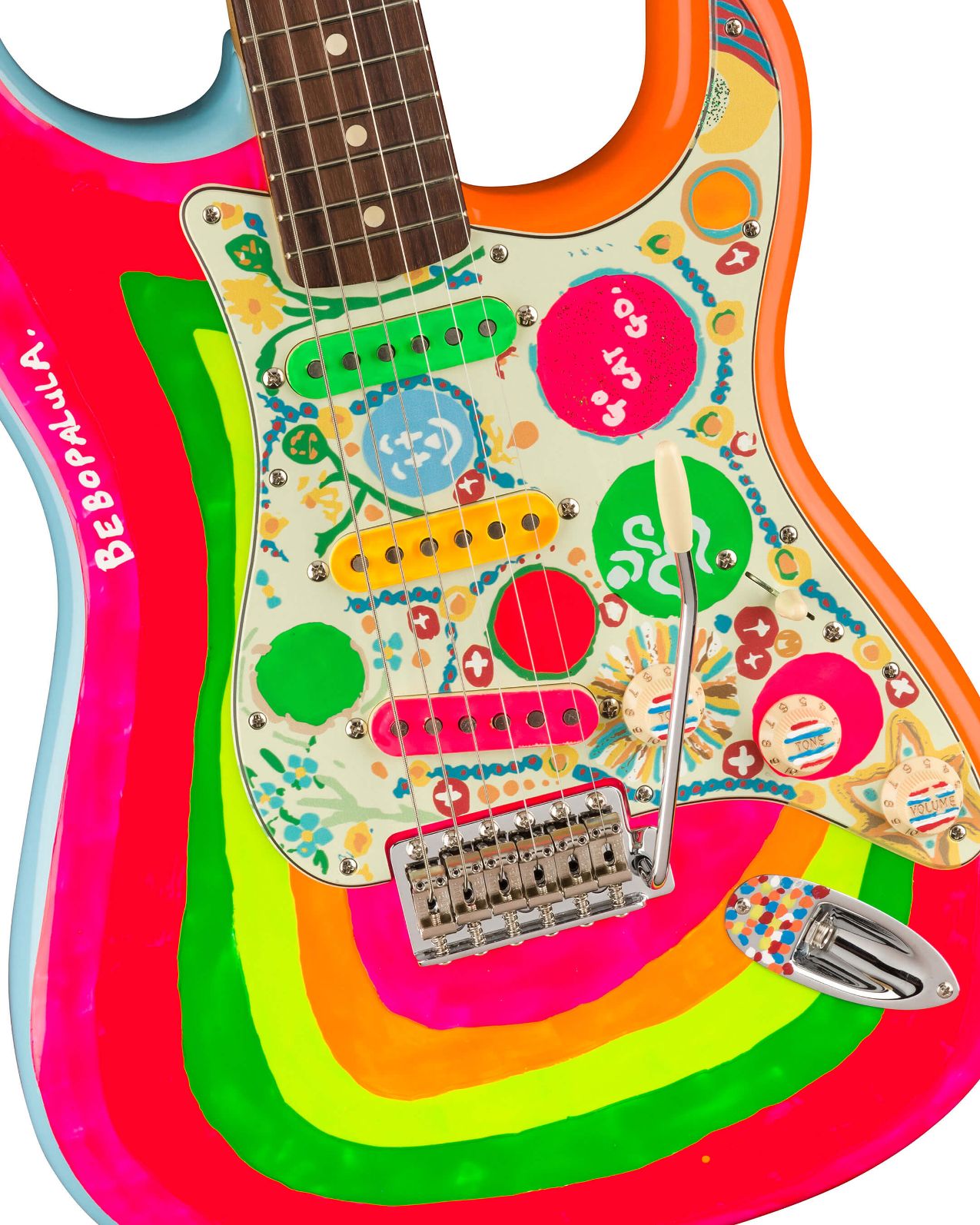 Geoff Emerick noticed something interesting happening during these camera rehearsals. “I noticed George Harrison engaged in conversation with the television director for quite a long time. I had no idea what they were talking about, but I did notice during the broadcast that the camera was not trained on George during his guitar solo. Perhaps he requested that specifically, either because he didn't have confidence in his playing, or because he felt it was likely that he would replace the part later.” Geoff Emerick noticed something interesting happening during these camera rehearsals. “I noticed George Harrison engaged in conversation with the television director for quite a long time. I had no idea what they were talking about, but I did notice during the broadcast that the camera was not trained on George during his guitar solo. Perhaps he requested that specifically, either because he didn't have confidence in his playing, or because he felt it was likely that he would replace the part later.”
 After this TV camera rehearsal was complete, four more takes of overdubbing (takes 44 – 47) were recorded for “All You Need Is Love” in preparation for this day's decision to release the song as The Beatles' next single as soon after the broadcast as possible. Although we don't know for sure what these overdubs consisted of, Geoff Emerick's book “Here, There And Everywhere” may shed some light on this. “Adding to the chaos was John's insistence on making a last minute change to the arrangement, which sent George Martin into a tizzy. He was doing the orchestral score and had to rapidly come up with new sheet music for the musicians, who milled around impatiently waiting for him. To his credit, George came up with a spectacular arrangement, especially considering the very limited time he had to do it in and the odd meters that characterized the song.” These overdubs took place in EMI Studio One between 5 and 8 pm, all of them leaving then to get a good night's rest before the eventful next day. After this TV camera rehearsal was complete, four more takes of overdubbing (takes 44 – 47) were recorded for “All You Need Is Love” in preparation for this day's decision to release the song as The Beatles' next single as soon after the broadcast as possible. Although we don't know for sure what these overdubs consisted of, Geoff Emerick's book “Here, There And Everywhere” may shed some light on this. “Adding to the chaos was John's insistence on making a last minute change to the arrangement, which sent George Martin into a tizzy. He was doing the orchestral score and had to rapidly come up with new sheet music for the musicians, who milled around impatiently waiting for him. To his credit, George came up with a spectacular arrangement, especially considering the very limited time he had to do it in and the odd meters that characterized the song.” These overdubs took place in EMI Studio One between 5 and 8 pm, all of them leaving then to get a good night's rest before the eventful next day.
The day of reckoning arrived; June 25th, 1967. The Beatles, the orchestra, the engineering team, the BBC crew and everyone else involved arrived at EMI Studio One at around 2 pm for what became an arduous and nerve-wracking day of activity. Much rehearsal (all recorded) and trouble-shooting was needed before the live transmission would take place later that evening.
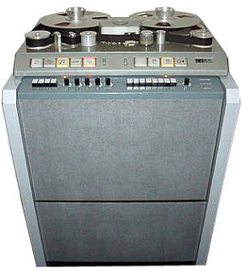 “The day of the performance came,” remembered George Martin, “with television cameras rolling into the big Number One Studio at Abbey Road. But I was still worried about the idea of going out totally live. So I told the boys: 'We're going to hedge our bets. This is how we'll do it. I'll have a four-track machine standing by, and when we go on the air I'll play you the rhythm track, which you'll pretend to be playing. But your voices and the orchestra will really be live, and we'll mix the whole thing together and transmit it to the waiting world like that.' The BBC's mobile control unit was set up in the forecourt at Abbey Road, and I was to feed them the mix from our control room inside the studios. Geoff Emerick, my engineer, was sitting right next to me but, even so, communication was rather hampered by the fact that a television camera was sitting right over us, watching our every move.” “The day of the performance came,” remembered George Martin, “with television cameras rolling into the big Number One Studio at Abbey Road. But I was still worried about the idea of going out totally live. So I told the boys: 'We're going to hedge our bets. This is how we'll do it. I'll have a four-track machine standing by, and when we go on the air I'll play you the rhythm track, which you'll pretend to be playing. But your voices and the orchestra will really be live, and we'll mix the whole thing together and transmit it to the waiting world like that.' The BBC's mobile control unit was set up in the forecourt at Abbey Road, and I was to feed them the mix from our control room inside the studios. Geoff Emerick, my engineer, was sitting right next to me but, even so, communication was rather hampered by the fact that a television camera was sitting right over us, watching our every move.”
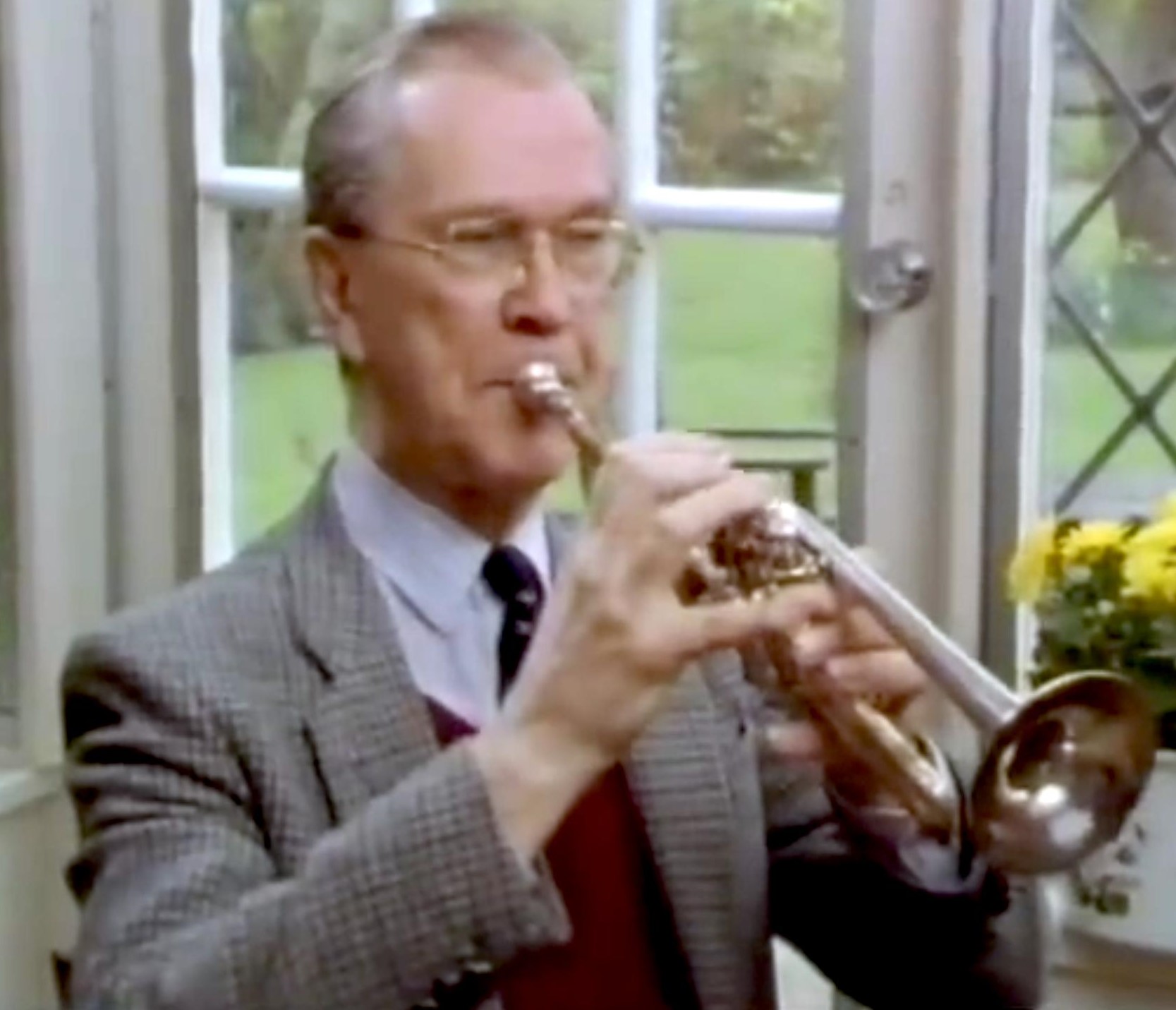 At some point, which may possibly have been during these rehearsals, one other last minute addition was made to the orchestral score. “George Martin...wrote the end of 'All You Need Is Love,” Paul explains. “It was a hurried session and we said, 'There's the end, we want it to go on and on.' Actually, what he wrote was much more disjoined, so when we put all the bits together, we said, 'Could we have “Greensleeves” right on top of the little Bach thing?' And on top of that, we had the 'In The Mood' bit.” Trumpeter David Mason remembered, “We played bits of Bach's Brandenburg concerto in the fade-out.” At some point, which may possibly have been during these rehearsals, one other last minute addition was made to the orchestral score. “George Martin...wrote the end of 'All You Need Is Love,” Paul explains. “It was a hurried session and we said, 'There's the end, we want it to go on and on.' Actually, what he wrote was much more disjoined, so when we put all the bits together, we said, 'Could we have “Greensleeves” right on top of the little Bach thing?' And on top of that, we had the 'In The Mood' bit.” Trumpeter David Mason remembered, “We played bits of Bach's Brandenburg concerto in the fade-out.”
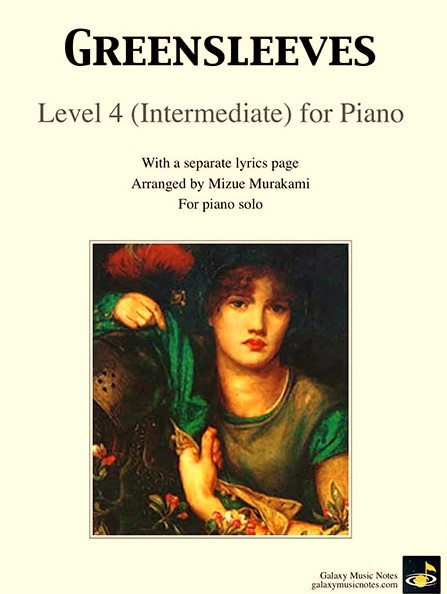 “When it came to the end of their fade-away as the song closed,” George Martin relates, “I asked them: 'How do you want to get out of it?' 'Write absolutely anthing you like, George,' they said. 'Put together any tunes you fancy, and just play it out like that.' The mixture I came up with was culled from the 'Marseillaise,' a Bach two-part invention (in F Major), 'Greensleeves,' and the little lick from 'In The Mood.' I wove them all together, at slightly different tempos so that they all still worked as separate entities.” “When it came to the end of their fade-away as the song closed,” George Martin relates, “I asked them: 'How do you want to get out of it?' 'Write absolutely anthing you like, George,' they said. 'Put together any tunes you fancy, and just play it out like that.' The mixture I came up with was culled from the 'Marseillaise,' a Bach two-part invention (in F Major), 'Greensleeves,' and the little lick from 'In The Mood.' I wove them all together, at slightly different tempos so that they all still worked as separate entities.”
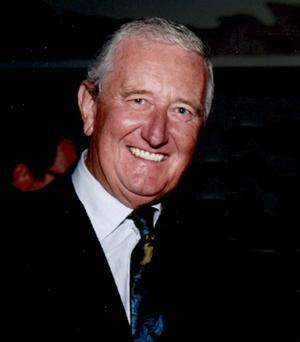 But there was only one problem with this arrangement. “Unfortunately, there was a sting in the tail for me,” George Martin remembered. “I was being paid the princely sum of fifteen pounds for arranging the music and writing the bits for the...ending, and I had chosen the tunes for the mixture in the belief that they were all out of copyright. More fool me. It turned out that although 'In The Mood' itself was out of copyright, the Glenn Miller arrangement of it was not. The little bit I had chosen was the arrangement, not the tune itself, and as a result EMI were asked by its owners for a royalty. The Beatles, quite rightly I suppose, said: 'We're not going to give up our copyright royalty.' So Ken East, the man who had by then become managing director of EMI Records, came to me and said: “Look here, George, you did the arrangement on this. They're expecting money for it.' 'You must be out of your mind,' I said. 'I get fifteen pounds for doing that arrangement. Do you mean to say I've got to pay blasted copyright out of my fifteen quid?' His answer was short and unequivocal. 'Yes.' In the end, of course, EMI had to settle with the publishers.” But there was only one problem with this arrangement. “Unfortunately, there was a sting in the tail for me,” George Martin remembered. “I was being paid the princely sum of fifteen pounds for arranging the music and writing the bits for the...ending, and I had chosen the tunes for the mixture in the belief that they were all out of copyright. More fool me. It turned out that although 'In The Mood' itself was out of copyright, the Glenn Miller arrangement of it was not. The little bit I had chosen was the arrangement, not the tune itself, and as a result EMI were asked by its owners for a royalty. The Beatles, quite rightly I suppose, said: 'We're not going to give up our copyright royalty.' So Ken East, the man who had by then become managing director of EMI Records, came to me and said: “Look here, George, you did the arrangement on this. They're expecting money for it.' 'You must be out of your mind,' I said. 'I get fifteen pounds for doing that arrangement. Do you mean to say I've got to pay blasted copyright out of my fifteen quid?' His answer was short and unequivocal. 'Yes.' In the end, of course, EMI had to settle with the publishers.”
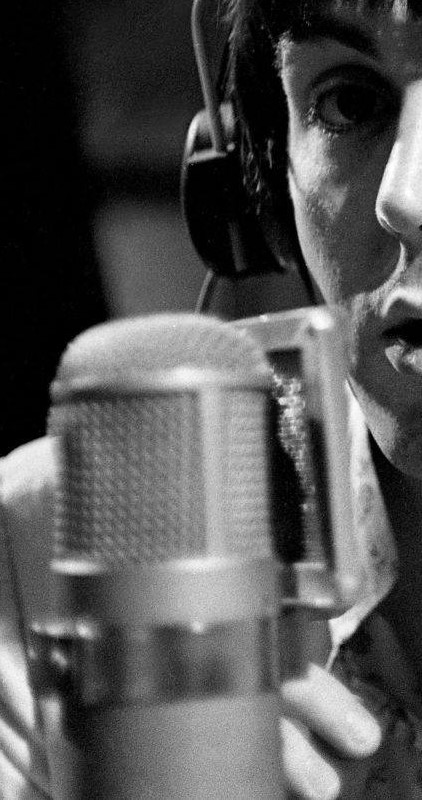 Three rehearsal takes were recorded first (takes 48 – 50), then three rehearsal takes for the BBC were recorded (numbered 1 – 3), then back to more dry run rehearsals (takes 51-53). “Paul had requested a working microphone so that he could shout out ad-libs,” remembered Geoff Emerick. “The problem was that the mic I had set up blocked Paul's face on the camera angle they wanted to use. In the end, I acceded to the BBC director's request that a smaller mic be substituted even thought it was not the mic I would normally have used. I felt it was unlikely that whatever Paul ended up ad-libbing would be of significant importance to the record, and even if it turned out that it was, it was something we could easily overdub later. Three rehearsal takes were recorded first (takes 48 – 50), then three rehearsal takes for the BBC were recorded (numbered 1 – 3), then back to more dry run rehearsals (takes 51-53). “Paul had requested a working microphone so that he could shout out ad-libs,” remembered Geoff Emerick. “The problem was that the mic I had set up blocked Paul's face on the camera angle they wanted to use. In the end, I acceded to the BBC director's request that a smaller mic be substituted even thought it was not the mic I would normally have used. I felt it was unlikely that whatever Paul ended up ad-libbing would be of significant importance to the record, and even if it turned out that it was, it was something we could easily overdub later.
 “Lennon was very nervous that day too,” recalled engineer Richard Lush. “He might not have looked it but I was used to working with him and you get to know when someone is nervous.” Geoff Emerick concurs: “Richard (Lush) and I were both struck by how visibly nervous John was, which was quite unusual for him: we'd never seen him wound up so tightly. He was smoking like a chimney and swigging directly from a pint bottle of milk, despite warnings from George Martin that it was bad for his voice – advice that Lennon studiously ignored. One time as I passed by, I heard John mumbling to himself, 'Oh, God, I hope I get the words right.' On this night he was forced to rely on his memory because his ever-present lyric sheet had to be placed off to the side due to the camera angle; if he turned his head to consult it, he'd be singing off-mike.” “Lennon was very nervous that day too,” recalled engineer Richard Lush. “He might not have looked it but I was used to working with him and you get to know when someone is nervous.” Geoff Emerick concurs: “Richard (Lush) and I were both struck by how visibly nervous John was, which was quite unusual for him: we'd never seen him wound up so tightly. He was smoking like a chimney and swigging directly from a pint bottle of milk, despite warnings from George Martin that it was bad for his voice – advice that Lennon studiously ignored. One time as I passed by, I heard John mumbling to himself, 'Oh, God, I hope I get the words right.' On this night he was forced to rely on his memory because his ever-present lyric sheet had to be placed off to the side due to the camera angle; if he turned his head to consult it, he'd be singing off-mike.”
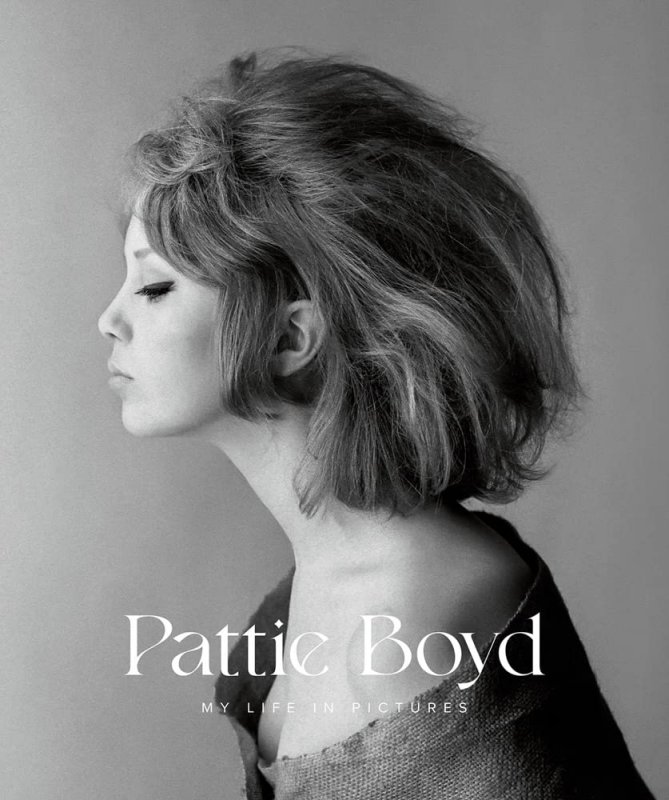 There apparently had been an hour or two break from rehearsals which allowed the engineering crew to leave for a well deserved dinner. When they all arrived back at around 6 pm, they saw that a large group of celebrity friends had arrived for the broadcast, all dressed in the colorful clothes of the day. According to reports, these friends included Mick Jagger, Marianne Faithfull, Keith Richard, Keith Moon, Eric Clapton, Pattie Harrison, Jane Asher, Mike McCartney, Graham Nash, Hunter Davies, Gary Leeds, Terry Condon, Allistair Taylor and Brian Epstein. “I had Keith Moon next to me,” Ringo remembered. “We decided to get some people in who looked like the 'love generation',” George Harrison recalled. "If you look closely at the floor, I know that Mick Jagger is there. But there is also an Eric Clapton, I believe, in full psychedelic regalia and permed hair, sitting right there." The band's promised "Happening" and depiction of "Swinging London" was indeed delivered for the occasion. There apparently had been an hour or two break from rehearsals which allowed the engineering crew to leave for a well deserved dinner. When they all arrived back at around 6 pm, they saw that a large group of celebrity friends had arrived for the broadcast, all dressed in the colorful clothes of the day. According to reports, these friends included Mick Jagger, Marianne Faithfull, Keith Richard, Keith Moon, Eric Clapton, Pattie Harrison, Jane Asher, Mike McCartney, Graham Nash, Hunter Davies, Gary Leeds, Terry Condon, Allistair Taylor and Brian Epstein. “I had Keith Moon next to me,” Ringo remembered. “We decided to get some people in who looked like the 'love generation',” George Harrison recalled. "If you look closely at the floor, I know that Mick Jagger is there. But there is also an Eric Clapton, I believe, in full psychedelic regalia and permed hair, sitting right there." The band's promised "Happening" and depiction of "Swinging London" was indeed delivered for the occasion.
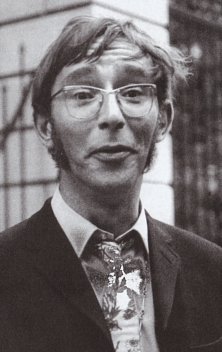 Author George Gunby, in his book “Hello Goodbye, The Story Of 'Mr. Fixit',” recounts the eyewitness recollections of Brian Epstein's assistant Allistair Taylor: “Throughout the afternoon and early evening, all of the musicians and technicians rehearsed constantly. This must have been the most rehearsed spontaneous performance ever! The party guests arrived...they sat on the studio floor and waited as the clock ticked remorselessly towards 9:30 pm, the time set for the live transmission. Despite the relaxing effects of the 'whacky baccy' being smoked throughout the studio and the building, tempers became frayed and nerves raw. Then John Lennon threw everything out of kilter by claiming that he had lost his voice. Paul laughed at him and gently ribbed his songwriting partner. A glass of water and a few more barbed comments from McCartney put things right.” Author George Gunby, in his book “Hello Goodbye, The Story Of 'Mr. Fixit',” recounts the eyewitness recollections of Brian Epstein's assistant Allistair Taylor: “Throughout the afternoon and early evening, all of the musicians and technicians rehearsed constantly. This must have been the most rehearsed spontaneous performance ever! The party guests arrived...they sat on the studio floor and waited as the clock ticked remorselessly towards 9:30 pm, the time set for the live transmission. Despite the relaxing effects of the 'whacky baccy' being smoked throughout the studio and the building, tempers became frayed and nerves raw. Then John Lennon threw everything out of kilter by claiming that he had lost his voice. Paul laughed at him and gently ribbed his songwriting partner. A glass of water and a few more barbed comments from McCartney put things right.”
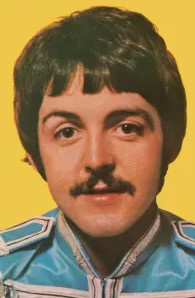 “Paul strode into the control room at one point,” Geoff Emerick stated, “and spent some time working on the bass sound with me. It struck me as a smart thing to do. Not only was he making certain that his instrument would come across the way he wanted it to, but getting out of the studio, away from the others and out of the line of fire, had a calming effect on both of us. It gave us both a little sanctuary where we could focus on just one specific thing and not think about the monumental technical feat we would soon be attempting to pull off.” “Paul strode into the control room at one point,” Geoff Emerick stated, “and spent some time working on the bass sound with me. It struck me as a smart thing to do. Not only was he making certain that his instrument would come across the way he wanted it to, but getting out of the studio, away from the others and out of the line of fire, had a calming effect on both of us. It gave us both a little sanctuary where we could focus on just one specific thing and not think about the monumental technical feat we would soon be attempting to pull off.”
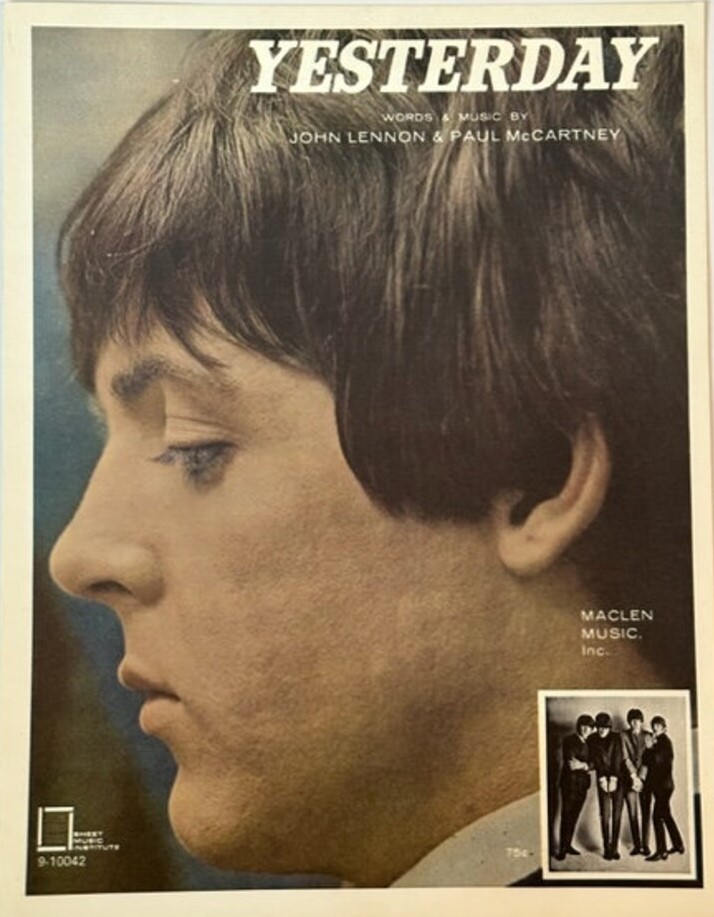 Four more rehearsal takes were recorded (takes 54 – 57) while they were waiting for the cue that they were ready for broadcast. After some last minute technical problems regarding lost communication with the BBC truck parked outside (and the frantic hiding of glasses and a bottle of scotch in the EMI control room during a last minute toast between the engineering staff), the intercom then unexpectedly blasted the statement “Going on air...NOW!” The live broadcast caught "take 57" of their rehearsal midstream, which was duly interrupted by George Martin in the control room, thanking The Beatles for their work on the “vocal backing,” and instructing the tape operator: “Run back the tape please, Richard (Lush).” While the group waited for the tape to be rewound and cued up, and in between announcer Steve Race's comments to the viewing audience, The Beatles were heard nervously goofing around with their instruments with Lennon singing “She loves you, yeah, yeah, yeah.” (During rehearsals, he is also heard singing “Yesterday” and “She'll Be Coming Round The Mountain When She Comes.”) Four more rehearsal takes were recorded (takes 54 – 57) while they were waiting for the cue that they were ready for broadcast. After some last minute technical problems regarding lost communication with the BBC truck parked outside (and the frantic hiding of glasses and a bottle of scotch in the EMI control room during a last minute toast between the engineering staff), the intercom then unexpectedly blasted the statement “Going on air...NOW!” The live broadcast caught "take 57" of their rehearsal midstream, which was duly interrupted by George Martin in the control room, thanking The Beatles for their work on the “vocal backing,” and instructing the tape operator: “Run back the tape please, Richard (Lush).” While the group waited for the tape to be rewound and cued up, and in between announcer Steve Race's comments to the viewing audience, The Beatles were heard nervously goofing around with their instruments with Lennon singing “She loves you, yeah, yeah, yeah.” (During rehearsals, he is also heard singing “Yesterday” and “She'll Be Coming Round The Mountain When She Comes.”)
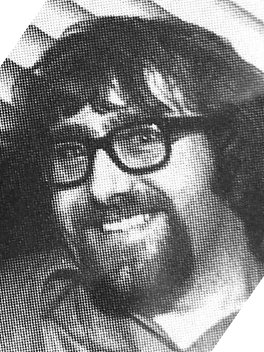 After Lennon takes a sip of milk, roadie Mal Evans collected some empty tea cups, and the orchestra entered into the studio and took their seats, the previously recorded tape is cued up and begins to be played. So starts "take 58," the official take of the song for the “Our World” broadcast which spanned the globe thanks to the Early Bird 'space booster' and Lana Bird and ATS/B satellites. After Lennon takes a sip of milk, roadie Mal Evans collected some empty tea cups, and the orchestra entered into the studio and took their seats, the previously recorded tape is cued up and begins to be played. So starts "take 58," the official take of the song for the “Our World” broadcast which spanned the globe thanks to the Early Bird 'space booster' and Lana Bird and ATS/B satellites.
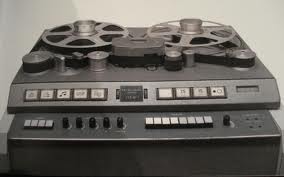 The make-up of the four-track tape was as follows: Track one contained the prerecorded rhythm track, Track two contained the live bass guitar, lead guitar and drums (they ended up being miked in order for Ringo to perform a live snare drum roll at the beginning of the song), track three had the live orchestra, and track four had the live vocals from John and Paul. The make-up of the four-track tape was as follows: Track one contained the prerecorded rhythm track, Track two contained the live bass guitar, lead guitar and drums (they ended up being miked in order for Ringo to perform a live snare drum roll at the beginning of the song), track three had the live orchestra, and track four had the live vocals from John and Paul.
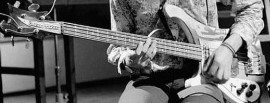 “The Beatles themselves gave an inspiring performance,” remembered Geoff Emerick, “though you could see the look of relief on all their faces as they got to the fadeout and realized that they'd actually pulled it off. John came through like a trouper, delivering an amazing vocal despite his nervousness and the plug of chewing gum in his mouth that he forgot to remove just before we went on air. Paul's (bass) playing, as always, was solid, with no gaffs, and even George Harrison's solo was reasonably good, though he did hit a clunker at the end. Unsurprisingly, despite the complicated score and tricky time changes, the orchestral players came through like the pros they were, with no fluffs whatsoever, even on the most demanding brass riffs.” “The Beatles themselves gave an inspiring performance,” remembered Geoff Emerick, “though you could see the look of relief on all their faces as they got to the fadeout and realized that they'd actually pulled it off. John came through like a trouper, delivering an amazing vocal despite his nervousness and the plug of chewing gum in his mouth that he forgot to remove just before we went on air. Paul's (bass) playing, as always, was solid, with no gaffs, and even George Harrison's solo was reasonably good, though he did hit a clunker at the end. Unsurprisingly, despite the complicated score and tricky time changes, the orchestral players came through like the pros they were, with no fluffs whatsoever, even on the most demanding brass riffs.”
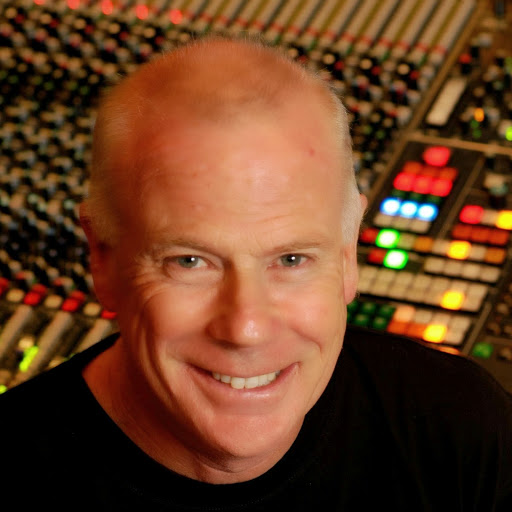 Shortly after the momentous broadcast was done, the engineers left for the nearby Abbey Tavern for a celebratory drink while the orchestra, BBC crew and all the guests left for the evening. When the engineers got back just before 11 pm, they worked with George Martin and the EMI maintenance engineer Martin Benge to put the finishing touches on the song in preparation for the soon-to-be-released single. Shortly after the momentous broadcast was done, the engineers left for the nearby Abbey Tavern for a celebratory drink while the orchestra, BBC crew and all the guests left for the evening. When the engineers got back just before 11 pm, they worked with George Martin and the EMI maintenance engineer Martin Benge to put the finishing touches on the song in preparation for the soon-to-be-released single.
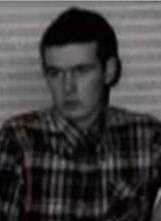 Geoff Emerick related: “From the very first playback, the four Beatles were knocked out by what they were hearing. Harrison winced a little during his guitar solo, but Richard (Lush) took the initiative and reassured him, saying, 'It'll be fine; we'll put a little wobble on it and it will be great.' In the end, all we had to do was add the effect and duck the last bad note.” Lennon related at the time: “There was no conception about how it should sound like at the end until we did it that day.” Geoff Emerick related: “From the very first playback, the four Beatles were knocked out by what they were hearing. Harrison winced a little during his guitar solo, but Richard (Lush) took the initiative and reassured him, saying, 'It'll be fine; we'll put a little wobble on it and it will be great.' In the end, all we had to do was add the effect and duck the last bad note.” Lennon related at the time: “There was no conception about how it should sound like at the end until we did it that day.”
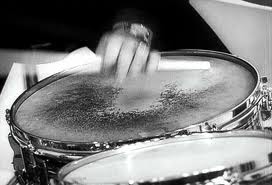 Geoff Emerick added: “John's vocal needed only two lines dropped in in the second verse, where, sure enough, he flubbed a lyric. The only other remaining task was to redo the snare drum roll that he played in the song's introduciotn; it was a last-minute decision for him to do it live during the broadcast, and George Martin felt it could be done a bit better...The only things that were replaced on 'All You Need Is Love' for the record release were the snare roll at the beginning, and two lines of the lead vocal.” After these overdubs took place, the studio doors were finally shut by around 1 am the following morning. Geoff Emerick added: “John's vocal needed only two lines dropped in in the second verse, where, sure enough, he flubbed a lyric. The only other remaining task was to redo the snare drum roll that he played in the song's introduciotn; it was a last-minute decision for him to do it live during the broadcast, and George Martin felt it could be done a bit better...The only things that were replaced on 'All You Need Is Love' for the record release were the snare roll at the beginning, and two lines of the lead vocal.” After these overdubs took place, the studio doors were finally shut by around 1 am the following morning.
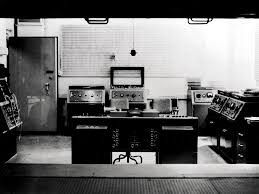 Later that day, June 26th, 1967, George Martin with Geoff Emerick and Richard Lush entered the control room of EMI Studio Two refreshed and ready to create the releasable mono mix of this track. While mixing out Lennon's tambourine shaking at the opening of the song, nine attempts were made at this crucial mix, only five of which were complete. Their fourth attempt was deemed the best, this being given to a young Ken Scott (who was apprenticing as a mastering engineer and would become a sought after producer in his own right) to be transferred to vinyl. “Funnily enough,” stated George Martin, “although John had added a new vocal, Ringo had added a drum roll and we had done a new mix, few people realized the single was any different to the TV version of the song.” Later that day, June 26th, 1967, George Martin with Geoff Emerick and Richard Lush entered the control room of EMI Studio Two refreshed and ready to create the releasable mono mix of this track. While mixing out Lennon's tambourine shaking at the opening of the song, nine attempts were made at this crucial mix, only five of which were complete. Their fourth attempt was deemed the best, this being given to a young Ken Scott (who was apprenticing as a mastering engineer and would become a sought after producer in his own right) to be transferred to vinyl. “Funnily enough,” stated George Martin, “although John had added a new vocal, Ringo had added a drum roll and we had done a new mix, few people realized the single was any different to the TV version of the song.”
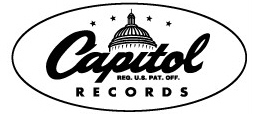 There was no intention to put out “All You Need Is Love” on an album at this point, so no stereo version was prepared yet. Capitol Records, however, did intend to include the song on their makeshift album “Magical Mystery Tour” so, with only the mono version available, they created a fake-stereo version of the song (probably in late October of 1967) for their stereo version of the album, placing the treble frequencies on one channel and the bass frequencies on the other channel. There was no intention to put out “All You Need Is Love” on an album at this point, so no stereo version was prepared yet. Capitol Records, however, did intend to include the song on their makeshift album “Magical Mystery Tour” so, with only the mono version available, they created a fake-stereo version of the song (probably in late October of 1967) for their stereo version of the album, placing the treble frequencies on one channel and the bass frequencies on the other channel.
 On November 1st, 1967, the very same engineering team of George Martin, Geoff Emerick and Richard Lush met in Room 53 of EMI Studios between 10 am and 1 pm to create a couple new mono mixes for songs that were to appear in the soundtrack to the upcoming “Yellow Submarine” movie, “All You Need Is Love” being one of them. This new mix, noted as remix 11, clipped off the last 13 seconds of the song, which omitted the final reprise of “Greensleeves” as heard on the released single. On November 1st, 1967, the very same engineering team of George Martin, Geoff Emerick and Richard Lush met in Room 53 of EMI Studios between 10 am and 1 pm to create a couple new mono mixes for songs that were to appear in the soundtrack to the upcoming “Yellow Submarine” movie, “All You Need Is Love” being one of them. This new mix, noted as remix 11, clipped off the last 13 seconds of the song, which omitted the final reprise of “Greensleeves” as heard on the released single.
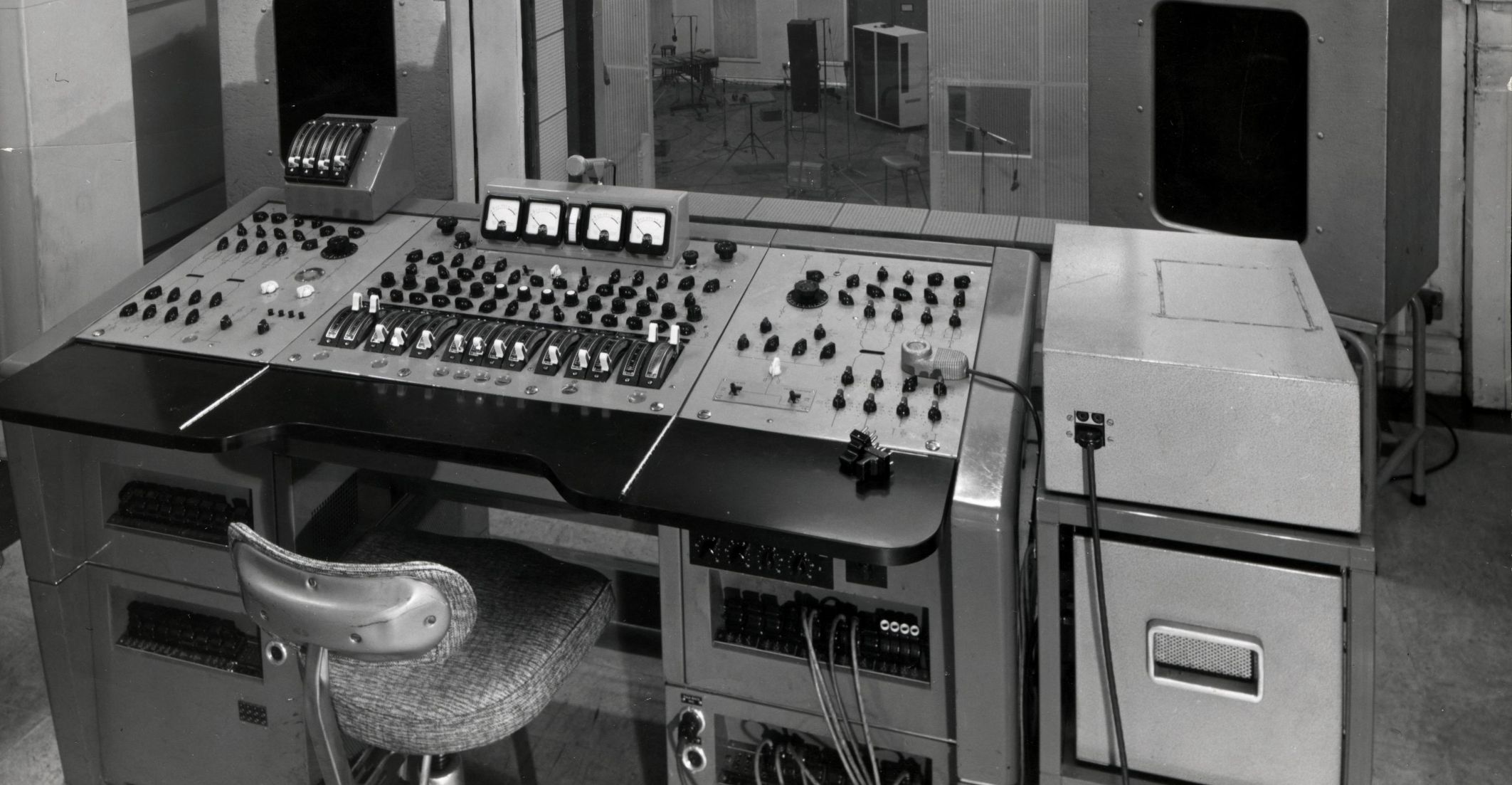 In preparation for the soundtrack album release of “Yellow Submarine,” a stereo mix of “All You Need Is Love” was now deemed necessary. This mix was made on October 29th, 1968 in the control room of EMI Studio Three by Geoff Emerick and 2nd engineer Graham Kirkby (no producer was present). There are many notable differences between this stereo mix and the released mono mix. In this stereo mix, the brass is quieter, the drums are louder, the piano is heard more prominently, and a voice that appears to say “Check!” is heard at about the 25 second mark. George's guitar solo is a little quieter here and has a little less of the “wobble” effect. This guitar solo also cuts off just after the flubbed note in the fifth measure in the mono mix while it continues to be heard throughout the fifth and sixth measure in this stereo mix. The stereo mix is also substantially shorter that the released mono mix, also omitting the second playing of “Greensleeves.” In preparation for the soundtrack album release of “Yellow Submarine,” a stereo mix of “All You Need Is Love” was now deemed necessary. This mix was made on October 29th, 1968 in the control room of EMI Studio Three by Geoff Emerick and 2nd engineer Graham Kirkby (no producer was present). There are many notable differences between this stereo mix and the released mono mix. In this stereo mix, the brass is quieter, the drums are louder, the piano is heard more prominently, and a voice that appears to say “Check!” is heard at about the 25 second mark. George's guitar solo is a little quieter here and has a little less of the “wobble” effect. This guitar solo also cuts off just after the flubbed note in the fifth measure in the mono mix while it continues to be heard throughout the fifth and sixth measure in this stereo mix. The stereo mix is also substantially shorter that the released mono mix, also omitting the second playing of “Greensleeves.”
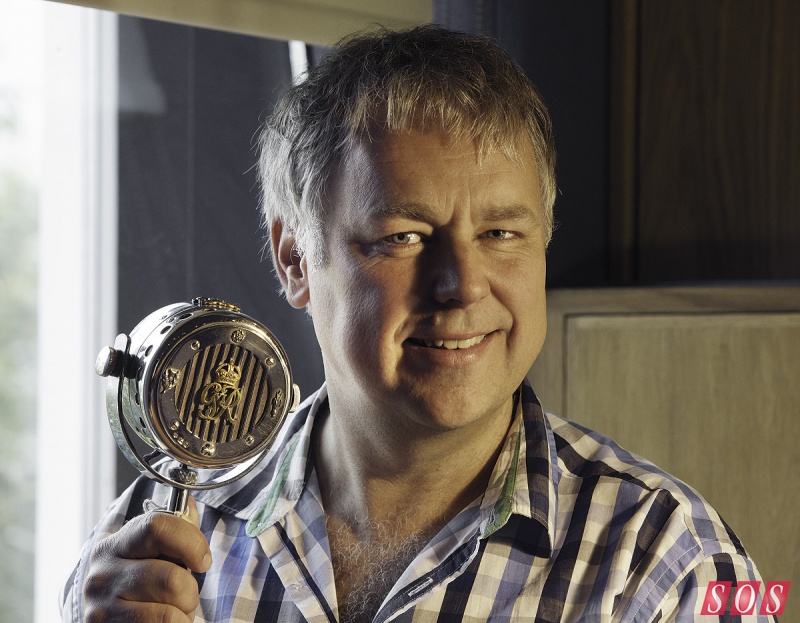 Sometime in early 1999, a brand new mix of “All You Need Is Love” was created in EMI Studios for the album “Yellow Submarine Songtrack” which was put together to coincide with the re-release of the film that year. This vibrant new mix has the “Check!” voice panned out and also has the same earlier fade as the previous stereo mix. This mix was created by the engineering team of Peter Cobbin, Paul Hicks, Mirek Stiles and Allan Rouse. Sometime in early 1999, a brand new mix of “All You Need Is Love” was created in EMI Studios for the album “Yellow Submarine Songtrack” which was put together to coincide with the re-release of the film that year. This vibrant new mix has the “Check!” voice panned out and also has the same earlier fade as the previous stereo mix. This mix was created by the engineering team of Peter Cobbin, Paul Hicks, Mirek Stiles and Allan Rouse.
 Also, sometime presumably in early 2006, George Martin and son Giles Martin met in EMI Studios (now Abbey Road Studios) to create yet another stereo mix of “All You Need Is Love” for the album and project “Love.” This mix is generally the same as the original stereo mix until the fade out which combines elements of “Baby You're A Rich Man,” “Rain, “Sgt. Pepper's Lonely Hearts Club Band” and “Ticket To Ride.” The song then ends with a combination of the orchestration of the song “Good Night” and the sign off on their “Third Christmas Record." Also, sometime presumably in early 2006, George Martin and son Giles Martin met in EMI Studios (now Abbey Road Studios) to create yet another stereo mix of “All You Need Is Love” for the album and project “Love.” This mix is generally the same as the original stereo mix until the fade out which combines elements of “Baby You're A Rich Man,” “Rain, “Sgt. Pepper's Lonely Hearts Club Band” and “Ticket To Ride.” The song then ends with a combination of the orchestration of the song “Good Night” and the sign off on their “Third Christmas Record."
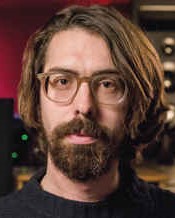 Giles Martin made another stereo mix of "All You Need Is Love" in Abbey Road Studios, assited by Sam Okell, to be included on the re-release of the compilation LP "Beatles 1." Giles Martin made another stereo mix of "All You Need Is Love" in Abbey Road Studios, assited by Sam Okell, to be included on the re-release of the compilation LP "Beatles 1."
There was also a live recording of the song, performed by Paul with Rod Stewart and Joe Cocker, this recording occurring on June 3rd, 2002 during the "Golden Jubilee of Queen Elizabeth II" in London. This performance was included on an album entitled "Party At The Palace."
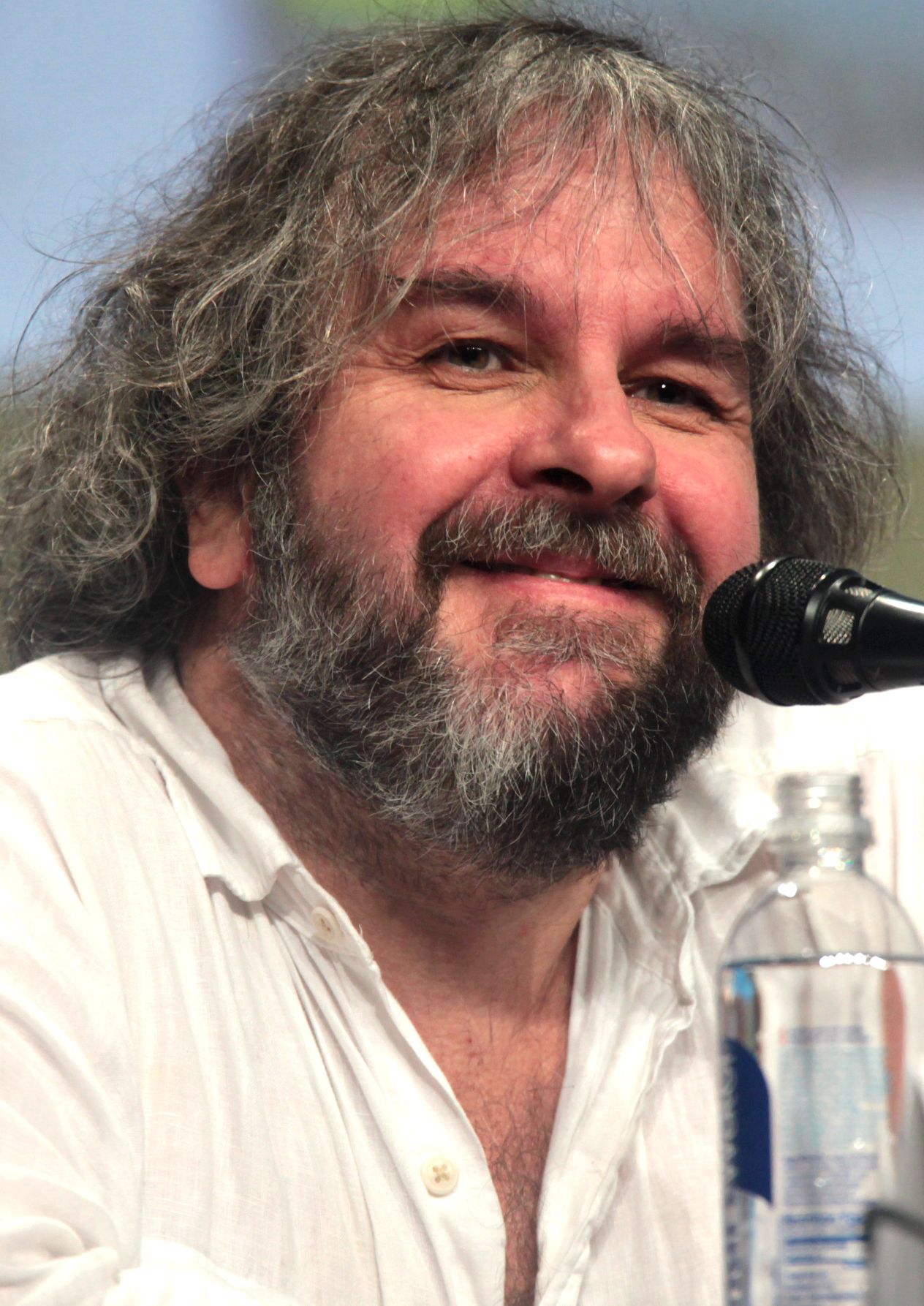 Giles Martin was also given the task in 2023 of creating a "demix remix" of the song "All You Need Is Love" for the 50th Anniversary edition of the compilation album "The Beatles / 1967 - 1970" ("The Blue Album"). With Peter Jackson's AI technology at his disposal, Giles Martin was now able to utilize this "new machine-learning techology" so that the "individual elements that were put to tape...and were therefore impossible to separate" could be subject to becoming "untangled, allowing Giles (Martin) to put the original recordings back together with even greater clarity and impact," as stated by John Harris in the liner notes of the above mentioned album. Since the final "Greensleeves" moments of the song are omitted, it can easily be assumed that the shorter stereo mix of the song was treated to the AI techology by Peter Jackson and then given to Giles Martin for creating this abbreviated but excellent stereo mix that will, undoubtedly, become the standard mix of "All You Need Is Love" throughout the next few decades. Giles Martin was also given the task in 2023 of creating a "demix remix" of the song "All You Need Is Love" for the 50th Anniversary edition of the compilation album "The Beatles / 1967 - 1970" ("The Blue Album"). With Peter Jackson's AI technology at his disposal, Giles Martin was now able to utilize this "new machine-learning techology" so that the "individual elements that were put to tape...and were therefore impossible to separate" could be subject to becoming "untangled, allowing Giles (Martin) to put the original recordings back together with even greater clarity and impact," as stated by John Harris in the liner notes of the above mentioned album. Since the final "Greensleeves" moments of the song are omitted, it can easily be assumed that the shorter stereo mix of the song was treated to the AI techology by Peter Jackson and then given to Giles Martin for creating this abbreviated but excellent stereo mix that will, undoubtedly, become the standard mix of "All You Need Is Love" throughout the next few decades.
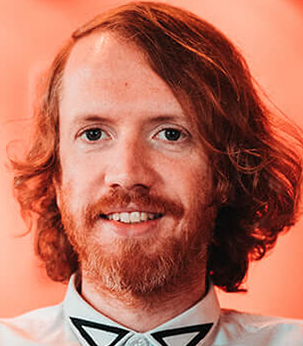 Sometime in 2025, producer Giles Martin, with engineers Joe Wyatt and Greg McAllister, created a mix of a June 24th, 1967 rehearsal of the song in EMI Studio One for inclusion on the "Anthology 4" album, this being released in various editions in 2025 as detailed below. Sometime in 2025, producer Giles Martin, with engineers Joe Wyatt and Greg McAllister, created a mix of a June 24th, 1967 rehearsal of the song in EMI Studio One for inclusion on the "Anthology 4" album, this being released in various editions in 2025 as detailed below.
Song Structure and Style
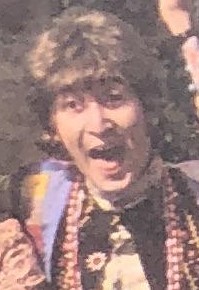 For a song that was intended for an international audience, John kept to a simple song structure, this being '(introductory) verse/ verse/ verse/ chorus/ (instrumental) verse/ chorus/ verse/ chorus/ chorus' (or aaabababb) with a short intro and extended meandering conclusion thrown in afterwards. However, time signature changes abound as is sporadically usual on Lennon songs in his later Beatles output. For a song that was intended for an international audience, John kept to a simple song structure, this being '(introductory) verse/ verse/ verse/ chorus/ (instrumental) verse/ chorus/ verse/ chorus/ chorus' (or aaabababb) with a short intro and extended meandering conclusion thrown in afterwards. However, time signature changes abound as is sporadically usual on Lennon songs in his later Beatles output.
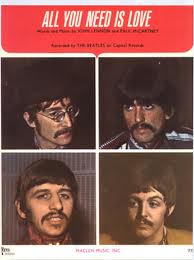 A short three-measure introduction is heard first which mostly comprises the orchestra playing “La Marseillaise” along with Ringo's overdubbed snare drum roll. Lennon also played this French National Anthem on harpsichord during the initial rhythm track but it is virtually, if not totally, indecipherable on the finished product. This introduction sets the 4/4 meter as a template for the rest of the song. A short three-measure introduction is heard first which mostly comprises the orchestra playing “La Marseillaise” along with Ringo's overdubbed snare drum roll. Lennon also played this French National Anthem on harpsichord during the initial rhythm track but it is virtually, if not totally, indecipherable on the finished product. This introduction sets the 4/4 meter as a template for the rest of the song.
The first eight-measure verse then begins which is actually just used as an introduction, the only vocals being the words “love, love, love” repeated three times in harmony by John, Paul and George. The second, fourth and eighth measures are in 3/4 time while the rest are in the usual 4/4 time, this pattern being repeated in all the verses of the entire song. John's harpsichord appears in earnest at this point playing simple chords throughout the verse while Ringo taps out quarter-note snare drum beats along with John. The violins kick in starting from the fifth measure and play throughout this verse while George squeaks out a few guitar notes in the final measures. We can also detect faint tambourine beats played by John from the live broadcast.
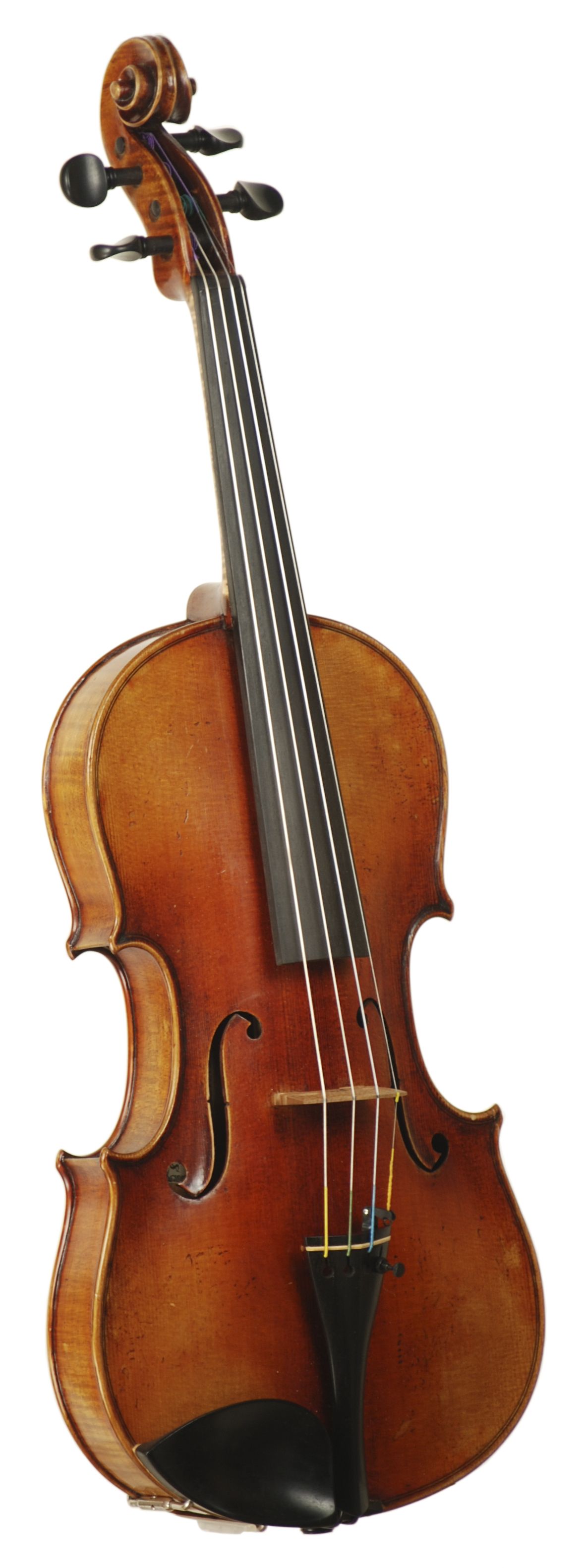 The first proper verse starts afterwards as Paul's bass guitar bounces in and John's lead vocals wind throughout. The “love, love, love” backing vocals are still present as are the strings playing nearly the same arrangement as in the introductory verse. There are some unidentified percussion-like sounds heard throughout this verse that possibly were made by George on violin in the rhythm track (or from John's banjo overdub). The second vocal verse comes next which is quite similar to the previous one except for a more elaborate orchestral arrangement, a combination of the prerecorded score with a different live broadcast score. We can also hear George playing some actual bowed violin in the final measure. The first proper verse starts afterwards as Paul's bass guitar bounces in and John's lead vocals wind throughout. The “love, love, love” backing vocals are still present as are the strings playing nearly the same arrangement as in the introductory verse. There are some unidentified percussion-like sounds heard throughout this verse that possibly were made by George on violin in the rhythm track (or from John's banjo overdub). The second vocal verse comes next which is quite similar to the previous one except for a more elaborate orchestral arrangement, a combination of the prerecorded score with a different live broadcast score. We can also hear George playing some actual bowed violin in the final measure.
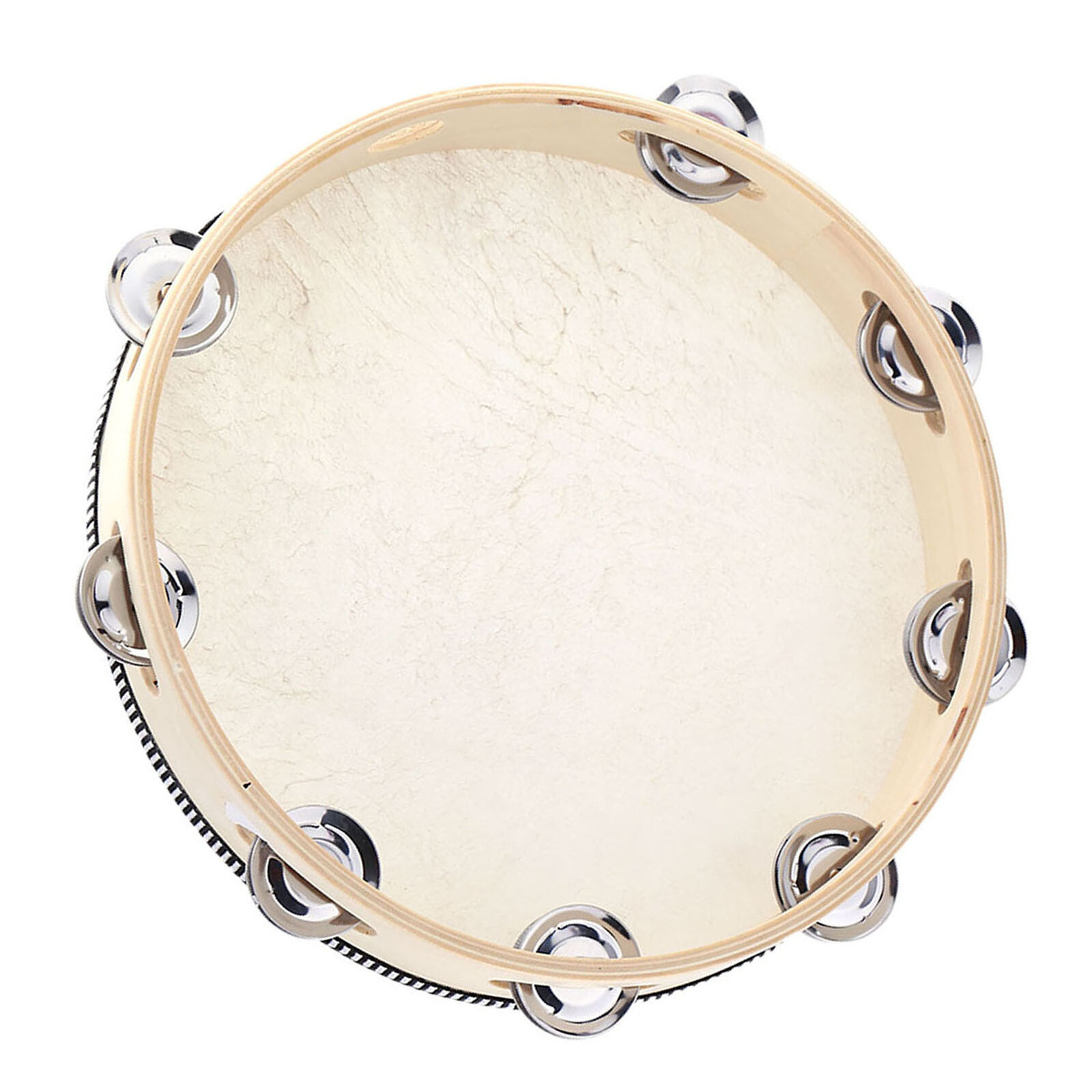 The first chorus then appears, which is also eight measures long. All of the measures are in 4/4 time except for the eighth measure which is in 2/4. John's lead vocal is double-tracked throughout the chorus while the verses are all single-tracked. Lennon's is the only voice heard in this chorus while the orchestral score plays a much more melodic and dominant role, mimicking in part what John originally played on the harpsichord in the rhythm track. Lennon's live tambourine is also heard somewhat more prominently in this chorus. The first chorus then appears, which is also eight measures long. All of the measures are in 4/4 time except for the eighth measure which is in 2/4. John's lead vocal is double-tracked throughout the chorus while the verses are all single-tracked. Lennon's is the only voice heard in this chorus while the orchestral score plays a much more melodic and dominant role, mimicking in part what John originally played on the harpsichord in the rhythm track. Lennon's live tambourine is also heard somewhat more prominently in this chorus.
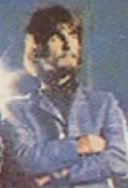 The next verse that follows is used as the instrumental section of the song, the first four measures highlighted by George's live guitar solo, the flubbed chord heard at the beginning of the fifth measure. The “love, love, love” backing vocals reappear here as the orchestra continues to be featured dramatically, especially with the staccato sixteenth-notes heard in the seventh measure. The tambourine is still present throughout as is George's violin noodling in the eighth measure. The second chorus then follows which is primarily identical to the first chorus except for Paul's adlib “whoop”s heard in the third and fourth measures. The next verse that follows is used as the instrumental section of the song, the first four measures highlighted by George's live guitar solo, the flubbed chord heard at the beginning of the fifth measure. The “love, love, love” backing vocals reappear here as the orchestra continues to be featured dramatically, especially with the staccato sixteenth-notes heard in the seventh measure. The tambourine is still present throughout as is George's violin noodling in the eighth measure. The second chorus then follows which is primarily identical to the first chorus except for Paul's adlib “whoop”s heard in the third and fourth measures.
The final verse then appears, which now features an engaging string arrangement not heard before. The backing vocals now sing the single word “love” held out three times and George's violin is heard playing a triplet-like pattern in the final measure which briefly continues on into the chorus that follows.
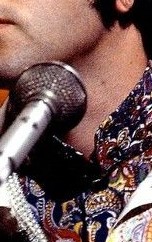 The chorus is now repeated twice, the orchestral arrangement altering once again from the choruses previously heard. Various additional elements are heard here, including an accordion, George Martin's barrel-house piano playing, backing vocals from Paul and George, and more fluid bass work from McCartney. The last chorus is noteworthy for featuring Paul's “all together now” in the second measure and “everybody” in the fourth measure. The strings climax in the fifth through eighth measures by playing ascending triplet patterns until they reach their highest pitch in the eighth measure, which is then played with a swing beat into the first four measures of the conclusion. The chorus is now repeated twice, the orchestral arrangement altering once again from the choruses previously heard. Various additional elements are heard here, including an accordion, George Martin's barrel-house piano playing, backing vocals from Paul and George, and more fluid bass work from McCartney. The last chorus is noteworthy for featuring Paul's “all together now” in the second measure and “everybody” in the fourth measure. The strings climax in the fifth through eighth measures by playing ascending triplet patterns until they reach their highest pitch in the eighth measure, which is then played with a swing beat into the first four measures of the conclusion.
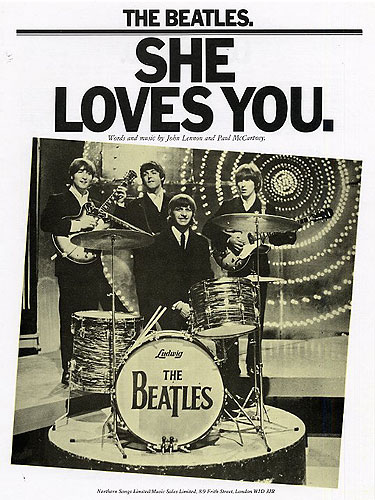 The conclusion consists of 30 measures in the common stereo version and 34 measures in the mono version. Vocally, this conclusion consists of John repeating “love is all you need” with a prerecorded John, Paul and George harmonizing the same line afterwards continually in a "row - row - row - your - boat" fashion. This vocalization continues this way until the twelfth measure, Paul yelling “woo-hoo” in the eleventh measure which encourages John to reply “yee-hay!” The prerecorded harmony vocals of John, Paul and George continue through the rest of the song but, with John's solo vocals abandoned, it allows him to adlib whatever came to mind, singing “Yesterday” in the 14th measure and shouting “Woah!” in the 15th measure. Paul shouts “Oh yeah” in the 17th and 18th measures which prompts John to sing “She loves you, yeah, yeah, yeah” twice within measures 19 and 22. Paul yells “woo-hoo” both in measures 24 and 25 and an “ah” in measure 26, after which we hear some indecipherable mumblings until the song fades away. The conclusion consists of 30 measures in the common stereo version and 34 measures in the mono version. Vocally, this conclusion consists of John repeating “love is all you need” with a prerecorded John, Paul and George harmonizing the same line afterwards continually in a "row - row - row - your - boat" fashion. This vocalization continues this way until the twelfth measure, Paul yelling “woo-hoo” in the eleventh measure which encourages John to reply “yee-hay!” The prerecorded harmony vocals of John, Paul and George continue through the rest of the song but, with John's solo vocals abandoned, it allows him to adlib whatever came to mind, singing “Yesterday” in the 14th measure and shouting “Woah!” in the 15th measure. Paul shouts “Oh yeah” in the 17th and 18th measures which prompts John to sing “She loves you, yeah, yeah, yeah” twice within measures 19 and 22. Paul yells “woo-hoo” both in measures 24 and 25 and an “ah” in measure 26, after which we hear some indecipherable mumblings until the song fades away.
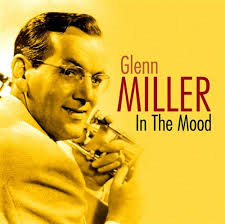 Orchestral insertions in the conclusion consist of David Mason playing Bach's “Brandenburg Concerto” in measures five through eight, tenor saxophonists playing the introduction to “In The Mood” in measures nine and ten and then again in measures twelve and thirteen. The strings play “Greensleeves” for the first time in measures 15 through 20, which is quickly followed by David Mason's repeat of “Brandenburg Concerto” in measures 20 through 24. Then comes “In The Mood” two more times in measures 24 and 25 and then 27 and 28. Then, as heard in the mono mix, “Greensleeves” is repeated through measures 29 through 34 until the recording finally fades away. Orchestral insertions in the conclusion consist of David Mason playing Bach's “Brandenburg Concerto” in measures five through eight, tenor saxophonists playing the introduction to “In The Mood” in measures nine and ten and then again in measures twelve and thirteen. The strings play “Greensleeves” for the first time in measures 15 through 20, which is quickly followed by David Mason's repeat of “Brandenburg Concerto” in measures 20 through 24. Then comes “In The Mood” two more times in measures 24 and 25 and then 27 and 28. Then, as heard in the mono mix, “Greensleeves” is repeated through measures 29 through 34 until the recording finally fades away.
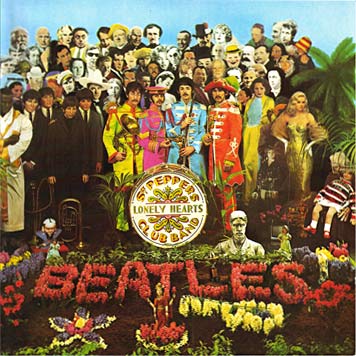 As was usually the case, John puts in a stellar performance for one of his own compositions, propelling the proceedings with his harpsichord work from the rhythm track. His vocal work is performed with great aplomb and his tambourine is simple but nicely done. We can't exactly say the same thing for his banjo playing since it's buried too far in the mix. Paul's bowed double-bass isn't very discernible either, but his bass guitar is proficiently performed as are his backing vocals. George's nerves brought out a suitable live guitar solo for the recording and even his violin playing wasn't too bad. Ringo's role may have been rudimentary but his overdubbed snare roll worked very nicely. George Martin's piano work in the final choruses is up to his usual high standards and is placed suitably low in the mix as not to detract from the simple message of the song. Coming off of the extravagant production of the “Sgt. Pepper” album, they still knew how to pull out all the stops to create a full and impressive arrangement to define the “summer of love” of 1967. As was usually the case, John puts in a stellar performance for one of his own compositions, propelling the proceedings with his harpsichord work from the rhythm track. His vocal work is performed with great aplomb and his tambourine is simple but nicely done. We can't exactly say the same thing for his banjo playing since it's buried too far in the mix. Paul's bowed double-bass isn't very discernible either, but his bass guitar is proficiently performed as are his backing vocals. George's nerves brought out a suitable live guitar solo for the recording and even his violin playing wasn't too bad. Ringo's role may have been rudimentary but his overdubbed snare roll worked very nicely. George Martin's piano work in the final choruses is up to his usual high standards and is placed suitably low in the mix as not to detract from the simple message of the song. Coming off of the extravagant production of the “Sgt. Pepper” album, they still knew how to pull out all the stops to create a full and impressive arrangement to define the “summer of love” of 1967.
American Releases
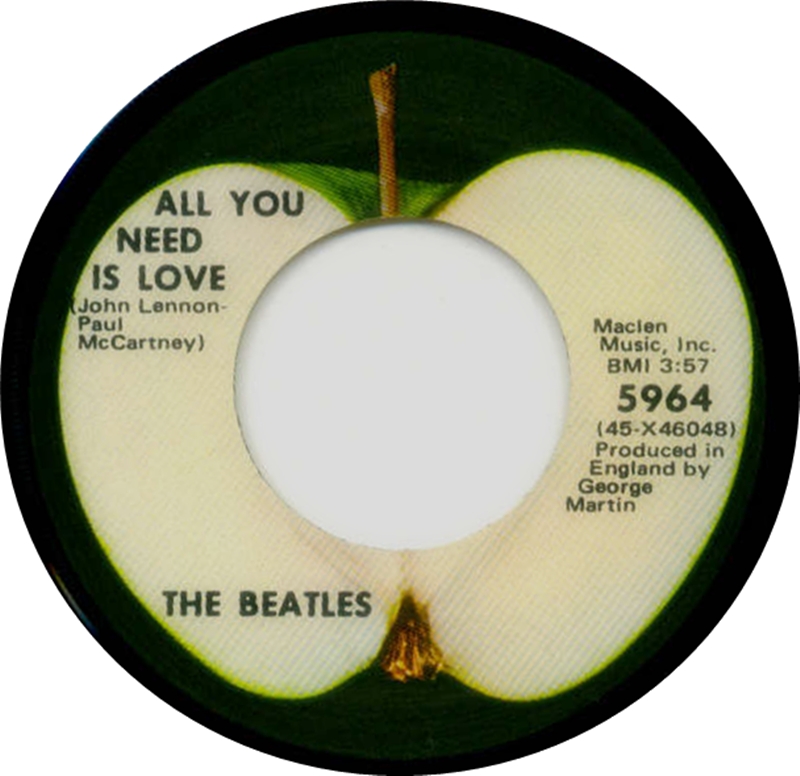 America had to wait a little over three weeks from the "Our World" broadcast to be able to purchase the "All You Need Is Love" single, which was released on July 17th, 1967. It only took five weeks on the Billboard Hot 100 to reach the #1 spot. Even though it only stayed at the summit for a single week (toppled by "Ode To Bille Joe" by Bobbie Gentry), it stayed in the top three of the singles chart for an impressive five weeks. Probably because of this being a rushed release, the single's b-side "Baby You're A Rich Man" was given a lower suffix numbe, resulting in "All You Need Is Love" being placed on the "sliced apple" b-side when the single was re-released in the '70s. America had to wait a little over three weeks from the "Our World" broadcast to be able to purchase the "All You Need Is Love" single, which was released on July 17th, 1967. It only took five weeks on the Billboard Hot 100 to reach the #1 spot. Even though it only stayed at the summit for a single week (toppled by "Ode To Bille Joe" by Bobbie Gentry), it stayed in the top three of the singles chart for an impressive five weeks. Probably because of this being a rushed release, the single's b-side "Baby You're A Rich Man" was given a lower suffix numbe, resulting in "All You Need Is Love" being placed on the "sliced apple" b-side when the single was re-released in the '70s.
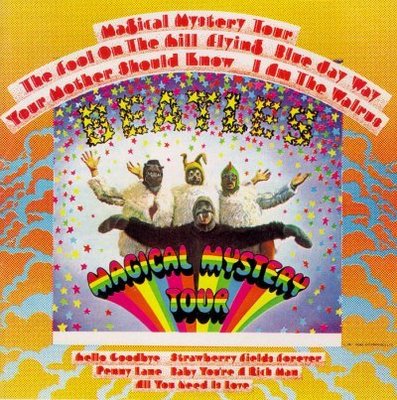 The song appeared on an American album for the first time only a few months later, on November 27th, 1967, on the Capitol concocted release “Magical Mystery Tour.” Since a stereo mix of the song didn't exist at this time, the stereo copies of this album included a fake-stereo mix that separated the bass and treble frequencies. The vinyl version of this album continued to be reissued in the US throughout the years, while it was first released on compact disc (now with the true stereo mix) on September 21st, 1987 and then on a remastered re-release on September 9th, 2009. The song appeared on an American album for the first time only a few months later, on November 27th, 1967, on the Capitol concocted release “Magical Mystery Tour.” Since a stereo mix of the song didn't exist at this time, the stereo copies of this album included a fake-stereo mix that separated the bass and treble frequencies. The vinyl version of this album continued to be reissued in the US throughout the years, while it was first released on compact disc (now with the true stereo mix) on September 21st, 1987 and then on a remastered re-release on September 9th, 2009.
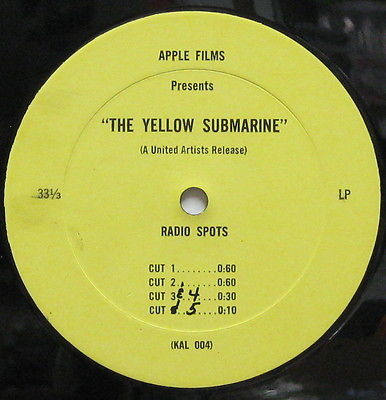 Presumably in November of 1968, in conjunction with the film debut of the animated movie "Yellow Submarine," a 12-inch promotional album was released to radio stations that contained five commercials to promote the film. There were two 60-second spots, two 30-second spots and one 10-second spot, some of which contained a snippet of "All You Need Is Love." This one-sided disc (the other side being blank), which was distributed by "Apple Films," is quite the collectors item today. Presumably in November of 1968, in conjunction with the film debut of the animated movie "Yellow Submarine," a 12-inch promotional album was released to radio stations that contained five commercials to promote the film. There were two 60-second spots, two 30-second spots and one 10-second spot, some of which contained a snippet of "All You Need Is Love." This one-sided disc (the other side being blank), which was distributed by "Apple Films," is quite the collectors item today.
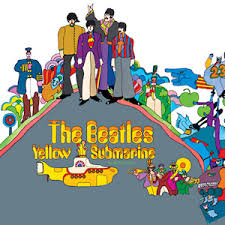 January 13th, 1969, was the next release of the song on the soundtrack album to the movie “Yellow Submarine.” This album featured the newly created stereo mix which was noticeably shorter than the version we all were used to hearing before this time. The first compact disc version of this album was released on October 25th, 1987 and then in a remastered condition on September 9th, 2009. January 13th, 1969, was the next release of the song on the soundtrack album to the movie “Yellow Submarine.” This album featured the newly created stereo mix which was noticeably shorter than the version we all were used to hearing before this time. The first compact disc version of this album was released on October 25th, 1987 and then in a remastered condition on September 9th, 2009.
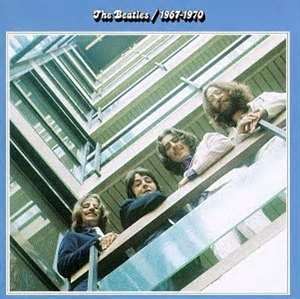 April 2nd, 1973, saw the release of the first official set of “greatest hits” packages by The Beatles, “All You Need Is Love” being contained on “The Beatles/1967-1970” (aka “The Blue Album”). This album first appeared on compact disc on September 20th, 1993 and then as a remastered set on August 10th, 2010. April 2nd, 1973, saw the release of the first official set of “greatest hits” packages by The Beatles, “All You Need Is Love” being contained on “The Beatles/1967-1970” (aka “The Blue Album”). This album first appeared on compact disc on September 20th, 1993 and then as a remastered set on August 10th, 2010.
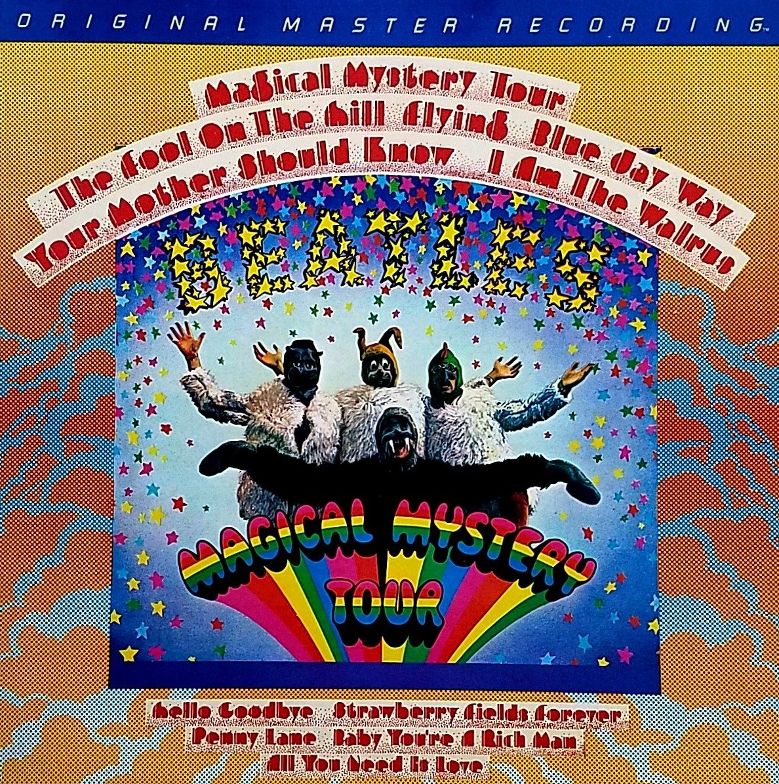 An interesting US vinyl edition of the “Magical Mystery Tour” album was released on February 1st, 1981. This was manufactured by Mobile Fidelity Sound Lab in Chatsworth, California and was part of their "Original Master Recording" series, which prepared its albums utilizing half-speed mastering technology from the original master tapes. In this case, however, they leased the master tape from EMI in the UK, not realizing that this was a second generation master tape originally supplied by Capitol Records in America. This being the case, this new release contained a second generation version of the duophonic "fake stereo" mixes of “Penny Lane,” “Baby, You're A Rich Man” and "All You Need Is Love," this release arguably being the worst ever version of the "Magical Mystery Tour" album ever released. Also, as was the case with all of the vinyl editions of the album by this time, the original multi-page booklet was omitted from this new vinyl release. Nevertheless, this edition of the album was only available for a short time and is quite collectible today for completists who need to own even the worst available copy of the album. An interesting US vinyl edition of the “Magical Mystery Tour” album was released on February 1st, 1981. This was manufactured by Mobile Fidelity Sound Lab in Chatsworth, California and was part of their "Original Master Recording" series, which prepared its albums utilizing half-speed mastering technology from the original master tapes. In this case, however, they leased the master tape from EMI in the UK, not realizing that this was a second generation master tape originally supplied by Capitol Records in America. This being the case, this new release contained a second generation version of the duophonic "fake stereo" mixes of “Penny Lane,” “Baby, You're A Rich Man” and "All You Need Is Love," this release arguably being the worst ever version of the "Magical Mystery Tour" album ever released. Also, as was the case with all of the vinyl editions of the album by this time, the original multi-page booklet was omitted from this new vinyl release. Nevertheless, this edition of the album was only available for a short time and is quite collectible today for completists who need to own even the worst available copy of the album.
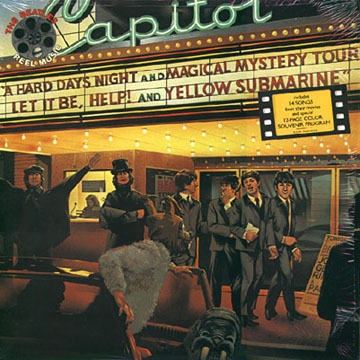 On March 22nd, 1982, Capitol once again included the song on a compilation album, this one corresponding with the re-release of their first movie "A Hard Day's Night" in movie theaters. The album was entitled “Reel Music,” which featured the predominant tracks from all of The Beatles’ movie releases. The album was quite successful, peaking at #19 on the Billboard album chart and certified gold by selling over 500,000 units. Over 12,000 promotional copies were also printed, these being on translucent gold vinyl. In promotion of this album, they also released a composite single on this date entitled “The Beatles Movie Medley,” which featured snippets of seven songs featured on the accompanying album, “All You Need Is Love” being one of the seven. This single was also included in the vinyl box set "The Beatles Singles Collection" that was released on December 6th, 1982. On March 22nd, 1982, Capitol once again included the song on a compilation album, this one corresponding with the re-release of their first movie "A Hard Day's Night" in movie theaters. The album was entitled “Reel Music,” which featured the predominant tracks from all of The Beatles’ movie releases. The album was quite successful, peaking at #19 on the Billboard album chart and certified gold by selling over 500,000 units. Over 12,000 promotional copies were also printed, these being on translucent gold vinyl. In promotion of this album, they also released a composite single on this date entitled “The Beatles Movie Medley,” which featured snippets of seven songs featured on the accompanying album, “All You Need Is Love” being one of the seven. This single was also included in the vinyl box set "The Beatles Singles Collection" that was released on December 6th, 1982.
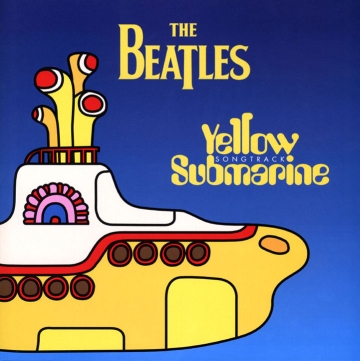 The next release of the song was on October 15th, 1982 on the single album “20 Greatest Hits.” Then in February of 1994, Capitol Cema re-released the single on pink vinyl as a “for jukebox only” 45. Then came the newly mixed version of the song as released on the album “Yellow Submarine Songtrack,” which was released on September 13th, 1999. This was followed by the November 14th, 2000 release of the album “Beatles 1,” “All You Need Is Love” earning its spot here because of its topping the charts in both Britain and America. This album was released in a remastered condition in September of 2011, and then as a remixed album on November 6th, 2015. The next release of the song was on October 15th, 1982 on the single album “20 Greatest Hits.” Then in February of 1994, Capitol Cema re-released the single on pink vinyl as a “for jukebox only” 45. Then came the newly mixed version of the song as released on the album “Yellow Submarine Songtrack,” which was released on September 13th, 1999. This was followed by the November 14th, 2000 release of the album “Beatles 1,” “All You Need Is Love” earning its spot here because of its topping the charts in both Britain and America. This album was released in a remastered condition in September of 2011, and then as a remixed album on November 6th, 2015.
In November of 1986, the “Yellow Submarine” soundtrack album was also made available as an “Original Master Recording” release by Mobile Fidelity Sound Lab, which included “All You Need Is Love.” The original master tape from EMI was used for this limited edition release, which is also hard to find today.
 Next came the album “Love,” released on November 21st, 2006, which featured a newly created mash-up mix of the song featuring elements of many other Beatles songs during its conclusion (as described above). And if die-hard fans felt that the original lengthened mono mix of “All You Need Is Love” had gotten lost in the shuffle, the CD box set “The Beatles In Mono” rectified the situation, this set being released on September 9th, 2009. The vinyl edition of this box set was first released on September 9th, 2014. Next came the album “Love,” released on November 21st, 2006, which featured a newly created mash-up mix of the song featuring elements of many other Beatles songs during its conclusion (as described above). And if die-hard fans felt that the original lengthened mono mix of “All You Need Is Love” had gotten lost in the shuffle, the CD box set “The Beatles In Mono” rectified the situation, this set being released on September 9th, 2009. The vinyl edition of this box set was first released on September 9th, 2014.
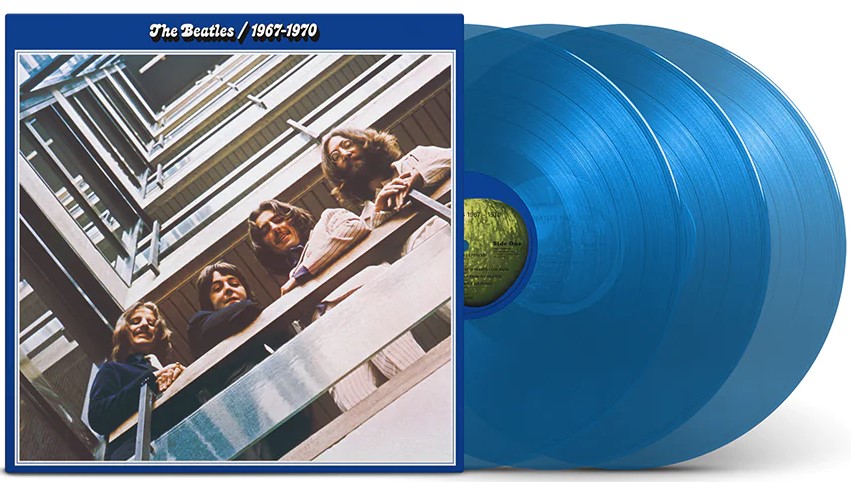 A 50th Anniversay edition of "The Beatles / 1967 - 1970" (aka "The Blue Album") was released on November 10th, 2023. This expanded compilation set included 12 additional songs for a total of 38 tracks, including the new mix of the song "All You Need Is Love" detailed above, and was made available as a double CD and as a triple vinyl release on both black and blue vinyl. A 50th Anniversay edition of "The Beatles / 1967 - 1970" (aka "The Blue Album") was released on November 10th, 2023. This expanded compilation set included 12 additional songs for a total of 38 tracks, including the new mix of the song "All You Need Is Love" detailed above, and was made available as a double CD and as a triple vinyl release on both black and blue vinyl.
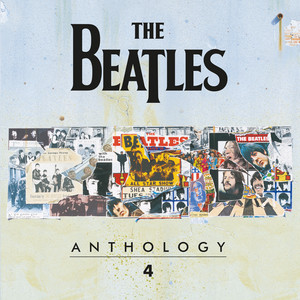 On November 21st, 2025, "Anthology 4" was released on both CD and vinyl, this also being made available within the "Anthology Collection" box set on CD and on vinyl. The June 24th, 1967 rehearsal of "All You Need Is Love" in EMI Studio One, as detailed above, was proudly included on this release. On November 21st, 2025, "Anthology 4" was released on both CD and vinyl, this also being made available within the "Anthology Collection" box set on CD and on vinyl. The June 24th, 1967 rehearsal of "All You Need Is Love" in EMI Studio One, as detailed above, was proudly included on this release.
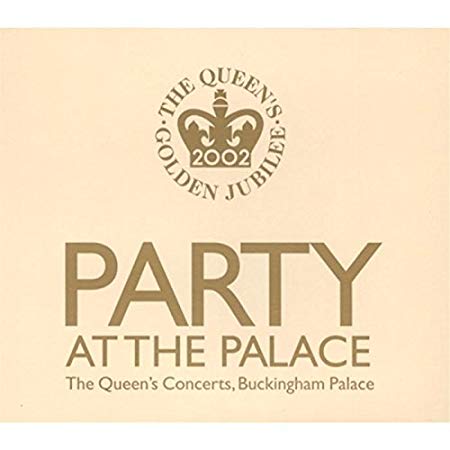 On July 2nd, 2002, a live album entitled "Party At The Palace" was released which includes an interesting live version of "All You Need Is Love" performed by Paul McCartney, Rod Stewart and Joe Cocker. This song was part of the elaborate "Golden Jubilee Of Queen Elizabeth II" held in London on June 3rd, 2002. On July 2nd, 2002, a live album entitled "Party At The Palace" was released which includes an interesting live version of "All You Need Is Love" performed by Paul McCartney, Rod Stewart and Joe Cocker. This song was part of the elaborate "Golden Jubilee Of Queen Elizabeth II" held in London on June 3rd, 2002.
Live Performances
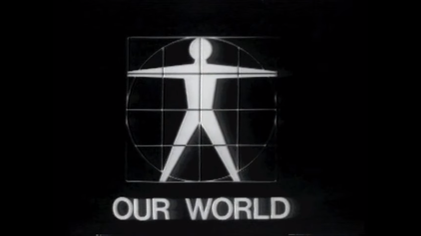 Even though The Beatles retired from live performances at the end of the summer of 1966, their June 25th, 1967 "Our World" broadcast of "All You Need Is Love" (as detailed above) is the nearest to a live show the group put on in nearly a year. Some may also point to the song's inclusion in the 1968 animated film "Yellow Submarine" as a performance of sorts, and therefore it is also acknowledged here as well. Even though The Beatles retired from live performances at the end of the summer of 1966, their June 25th, 1967 "Our World" broadcast of "All You Need Is Love" (as detailed above) is the nearest to a live show the group put on in nearly a year. Some may also point to the song's inclusion in the 1968 animated film "Yellow Submarine" as a performance of sorts, and therefore it is also acknowledged here as well.
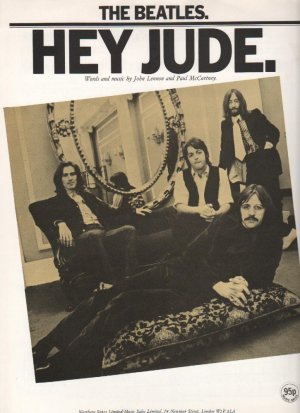 As part of the above mentioned "Golden Jubilee Of Queen Elizabeth II" on June 3rd, 2002, Paul took to the stage to perform a few songs. At one point, he was joined on the stage by Rod Stewart and Joe Cocker as they delivered a rousing version of "All You Need Is Love" in front of a packed audience that included the Queen herself. This, along with Paul's live performance of "Hey Jude," was included on the album "Party At The Palace." As part of the above mentioned "Golden Jubilee Of Queen Elizabeth II" on June 3rd, 2002, Paul took to the stage to perform a few songs. At one point, he was joined on the stage by Rod Stewart and Joe Cocker as they delivered a rousing version of "All You Need Is Love" in front of a packed audience that included the Queen herself. This, along with Paul's live performance of "Hey Jude," was included on the album "Party At The Palace."
Surprisingly, Paul McCartney decided to include a medley of two Beatles songs with a similar lyrical theme, both considered Lennon staples, on his lengthy “On The Run” tour. Paul and his band performed the entire song “The Word” and then finished it off with a three-time repeated chorus of “All You Need Is Love,” complete with his ad-libs “all together now,” “everybody” and a full fledged Beatle harmonized “she loves you, yeah, yeah, yeah” to end the performance. This obviously brought the house down in all the venues he decided to perform it at, which included most of the European leg of the tour, spanning from November 26th, 2011 (Bologna, Italy) to March 28th, 2012 (Antwerp, Belgium). For some reason, Paul decided not to perform this medley in North America, South America or Asia.
Conclusion
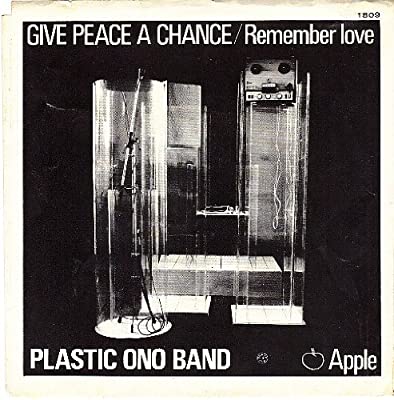 "Well, I'm really glad that most of the songs dealt with love, peace, understanding...You know, it really did. If you look back there's hardly any of 'em that says, 'Go on, kids, tell 'em all to sod off, leave your parents.' It's all very, 'All You Need Is Love,' John's 'Give Peace A Chance.' There's a very good spirit behind it all." "Well, I'm really glad that most of the songs dealt with love, peace, understanding...You know, it really did. If you look back there's hardly any of 'em that says, 'Go on, kids, tell 'em all to sod off, leave your parents.' It's all very, 'All You Need Is Love,' John's 'Give Peace A Chance.' There's a very good spirit behind it all."
This quote from Paul McCartney during the interviews from the Anthology documentary sums up nicely how the song “All You Need Is Love” was viewed by the group as the overall message The Beatles were trying to convey to the world. They weren't trying to subvert the morals of young minds in the sixties, as many thought. They were just being themselves, artistically expressing their honest thoughts and/or beliefs at any given time. George described the song as “a kind of subtle bit of PR for God, basically.”
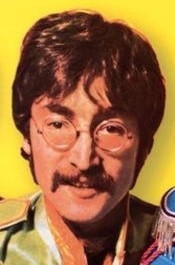 While the sentiments of “All You Need Is Love” weren't overtly political, the message can easily be interpreted as a salve for any unrest of any age if all the complications could somehow be stripped away. It reveals the underlying truth that inner peace needs to be attained first for each one of us individually before a bigger universal picture can emerge. “You can learn to be YOU in time,” John sings, instead of being who you are conditioned to be from your societal and/or religious upbringing onward. It may appear to be a herculean task to accomplish this but, promises John, “It's easy!” And, once this is done on an individual basis, our united focus on true unadulterated “love” can accomplish anything. While the sentiments of “All You Need Is Love” weren't overtly political, the message can easily be interpreted as a salve for any unrest of any age if all the complications could somehow be stripped away. It reveals the underlying truth that inner peace needs to be attained first for each one of us individually before a bigger universal picture can emerge. “You can learn to be YOU in time,” John sings, instead of being who you are conditioned to be from your societal and/or religious upbringing onward. It may appear to be a herculean task to accomplish this but, promises John, “It's easy!” And, once this is done on an individual basis, our united focus on true unadulterated “love” can accomplish anything.
“I still believe 'All You Need Is Love,' you know,” John related many years later, “but I don't believe that just saying it is gonna do it. You know, I mean, I still believe in the fact that love is what we all need.”
Song Summary
“All You Need Is Love”
Written by: John Lennon / Paul McCartney
- Song Written: June, 1967
- Song Recorded: June 14, 19, 23, 24, 25, 1967
- First US Release Date: July 17, 1967
- US Single Release: Capitol #5964
- Highest Chart Position: #1 (1 week)
- First US Album Release: Capitol #SMAL-2835 “Magical Mystery Tour”
- British Album Release: Apple #PCS7070 “Yellow Submarine”
- Length: 3:57 (mono) 3:48 (stereo)
- Key: G major
- Producer: George Martin
- Engineers: Geoff Emerick, Eddie Kramer, Richard Lush, George Chkiantz, Martin Benge
Instrumentation (most likely):
- John Lennon - Lead and Backing Vocals, Harpsichord, Banjo, tambourine
- Paul McCartney - Bass (1964 Rickenbacker 4001 S), Double-bass, backing vocals
- George Harrison - Violin, Guitar (1961 Sonic Blue Fender Stratocaster, painted psychedelic), backing vocals
- Ringo Starr - Drums (1964 Ludwig Super Classic Black Oyster Pearl)
- George Martin - Piano (Hamburg Steinway Baby Grand)
- Sidney Sax - Voilin
- Patrick Halling - Violin
- Eric Bowie - Violin
- Jack Holmes - Violin
- Rex Morris - Tenor Saxophone
- Don Honeywill - Tenor Saxophone
- Evan Watkins - Trombone
- Harry Spain - Trombone
- Jack Emblow - Accordion
- Stanley Woods - Trumpet, Flugelhorn
- David Mason - Piccolo Trumpet
- Keith Moon - Percussion
- Assorted Guests - Handclaps
Written and compiled by Dave Rybaczewski
|
IF YOU WOULD LIKE TO MAKE A DONATION TO KEEP THIS WEBSITE UP AND RUNNING, PLEASE CLICK BELOW!
Sign Up Below for our MONTHLY BEATLES TRIVIA QUIZ!
|